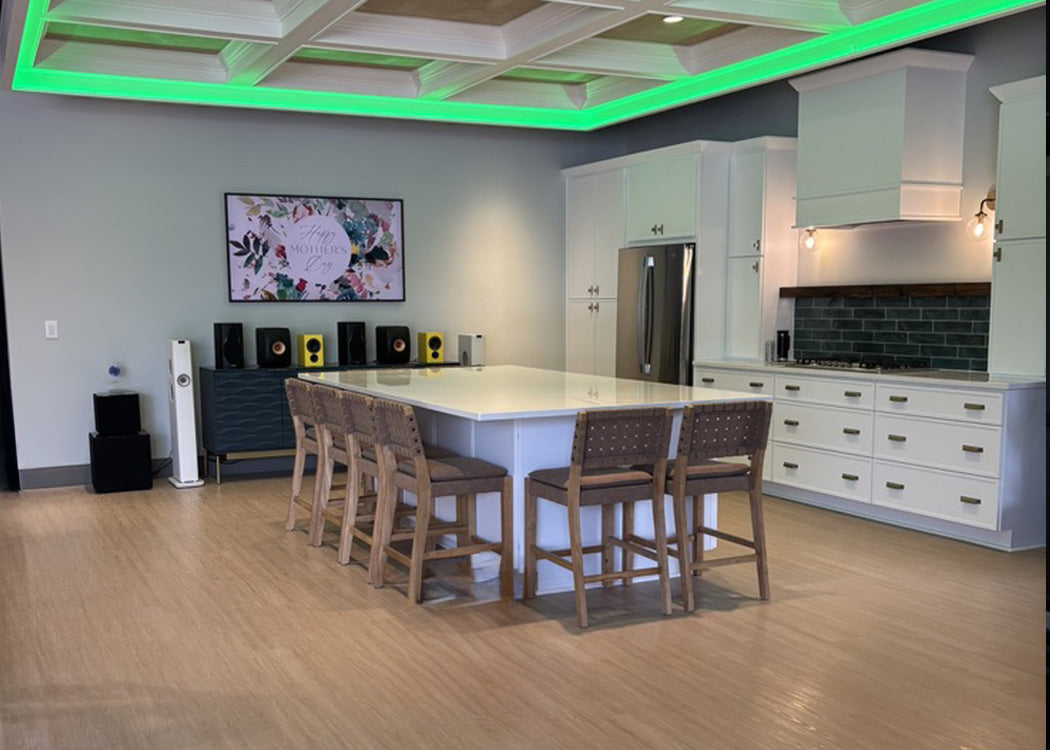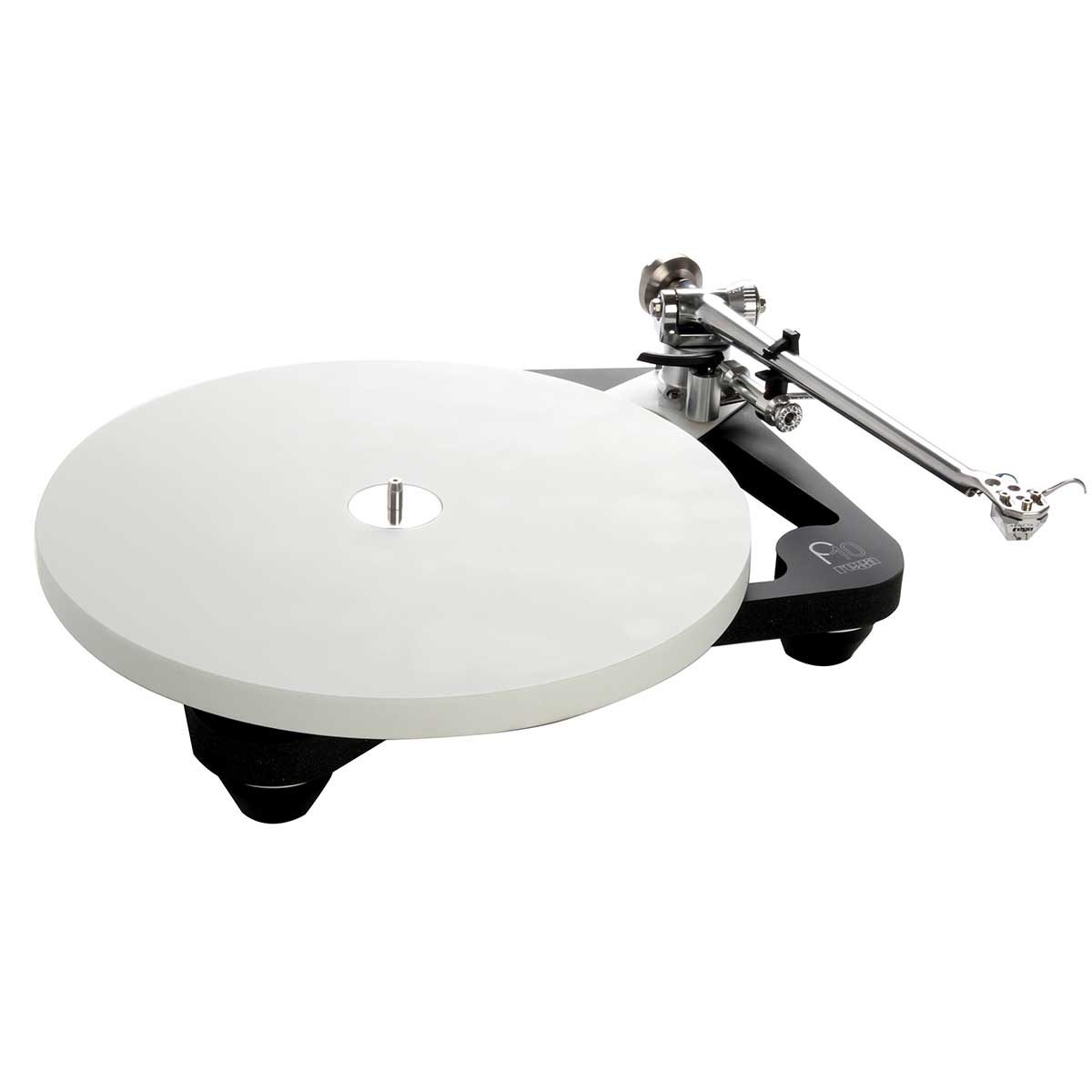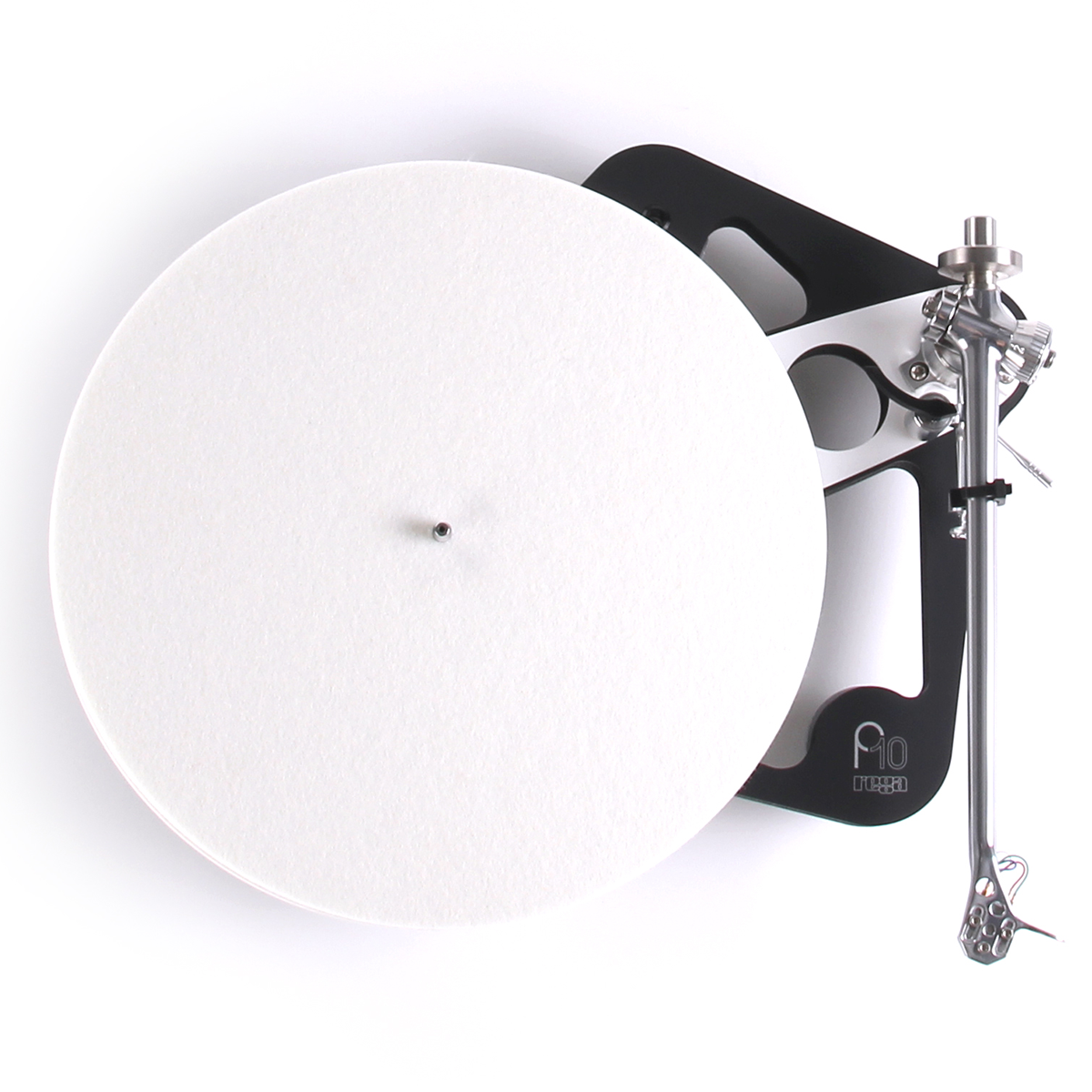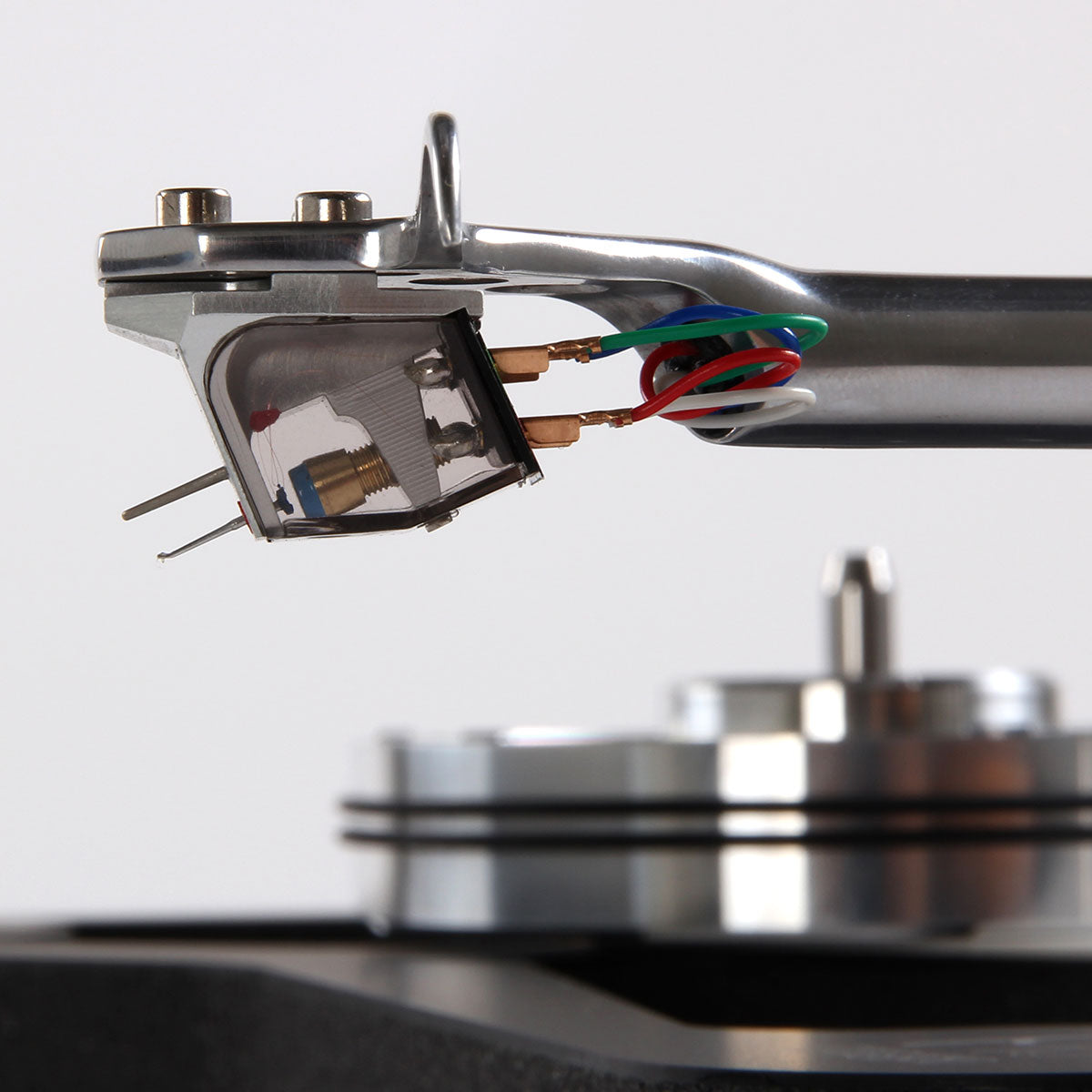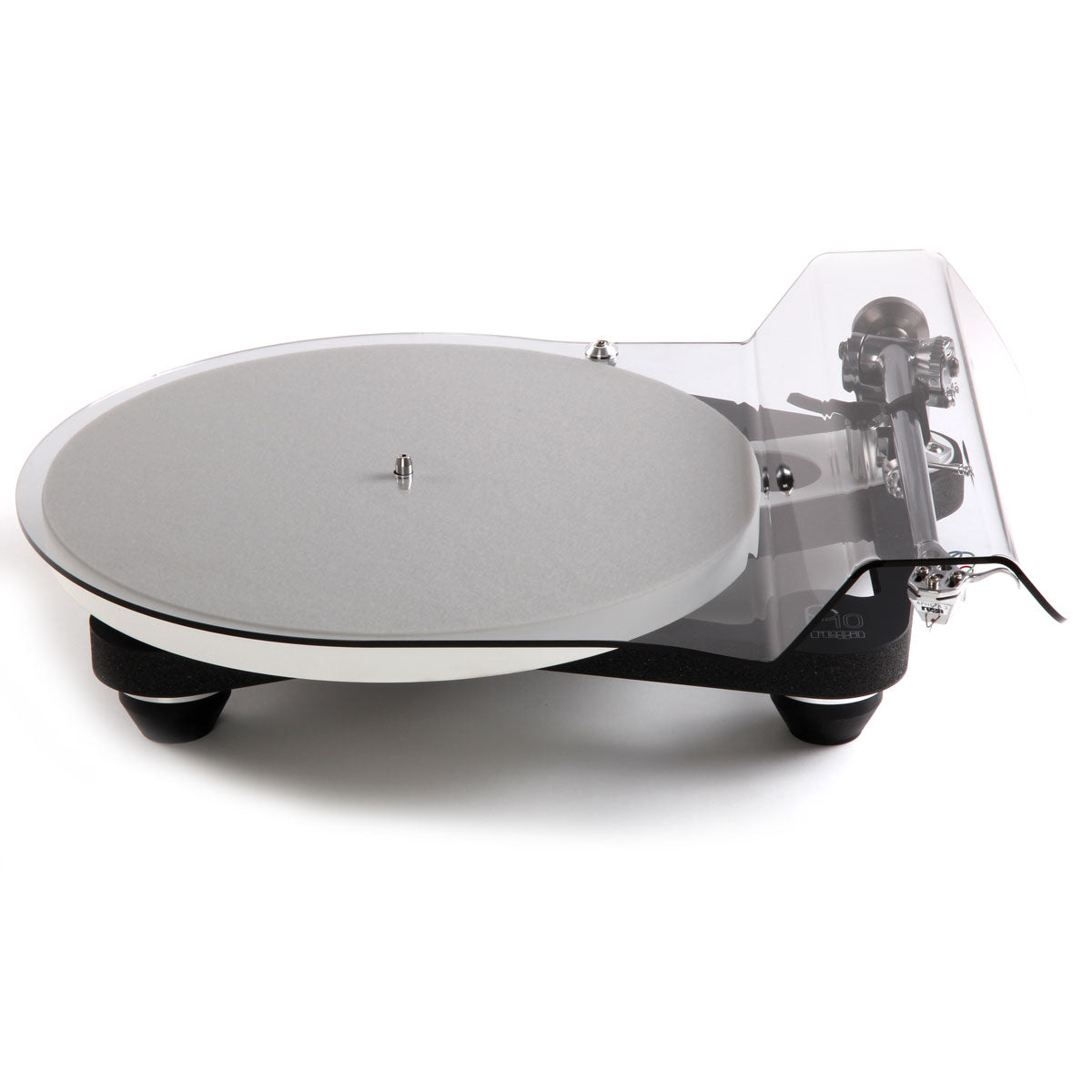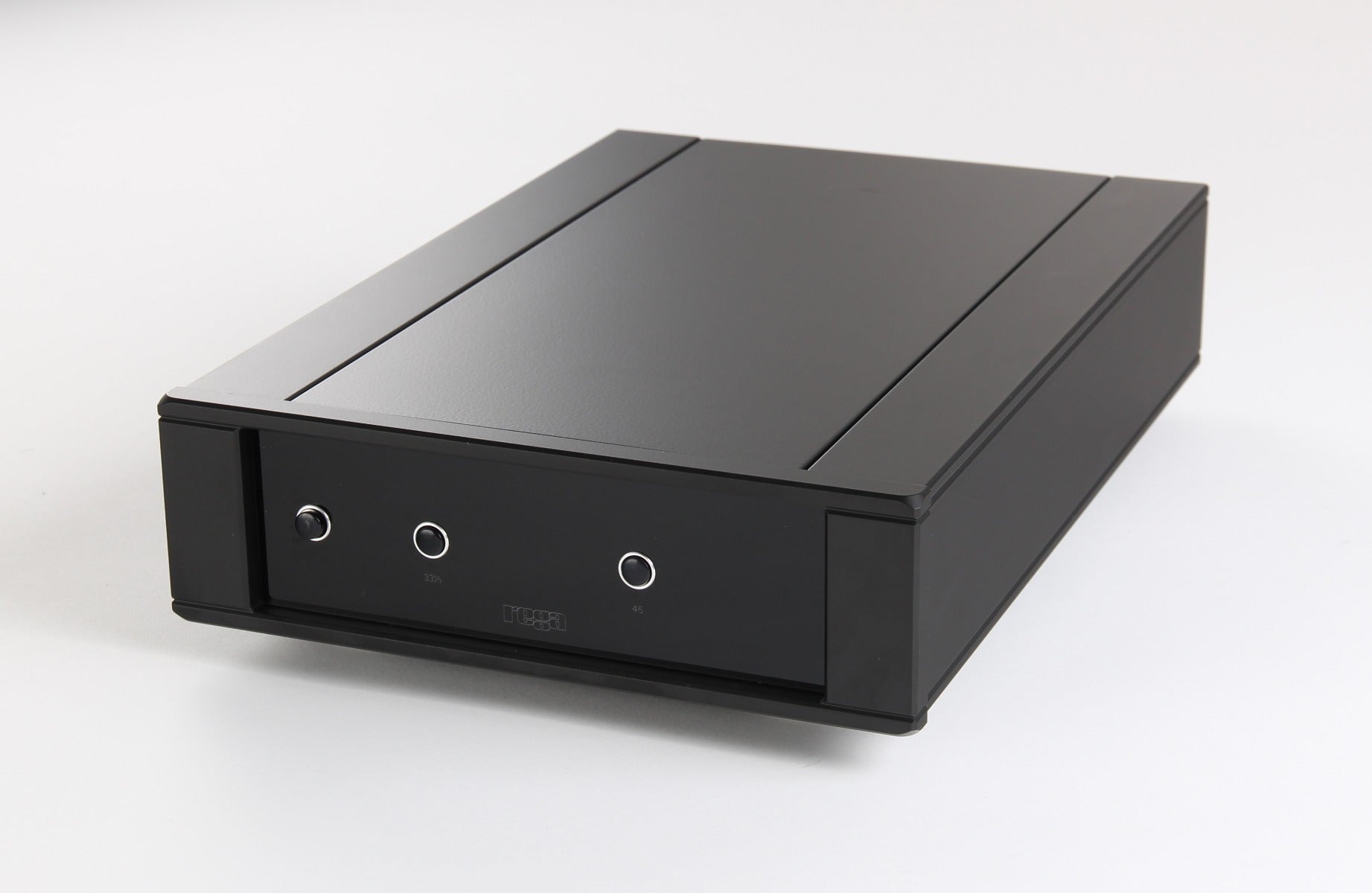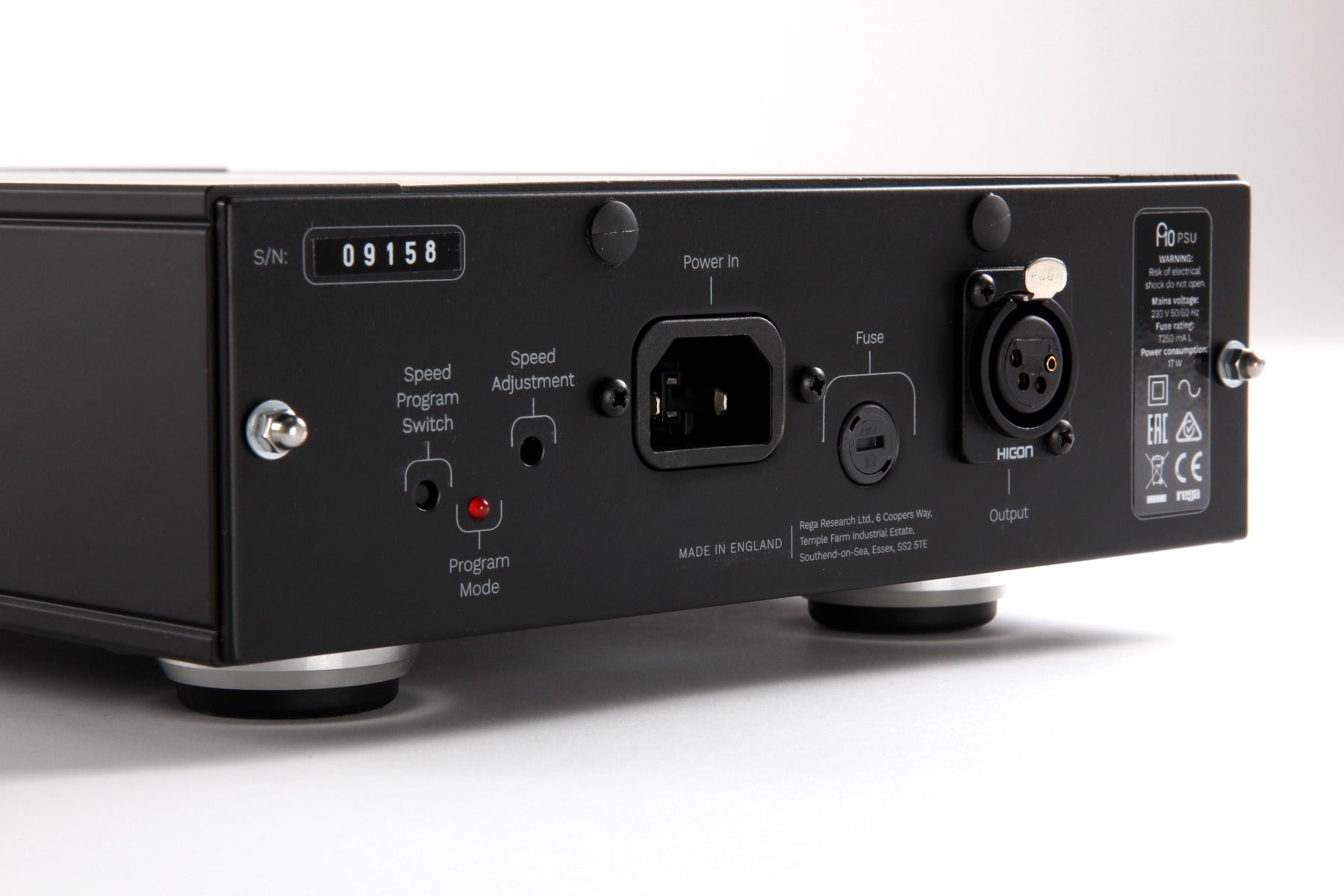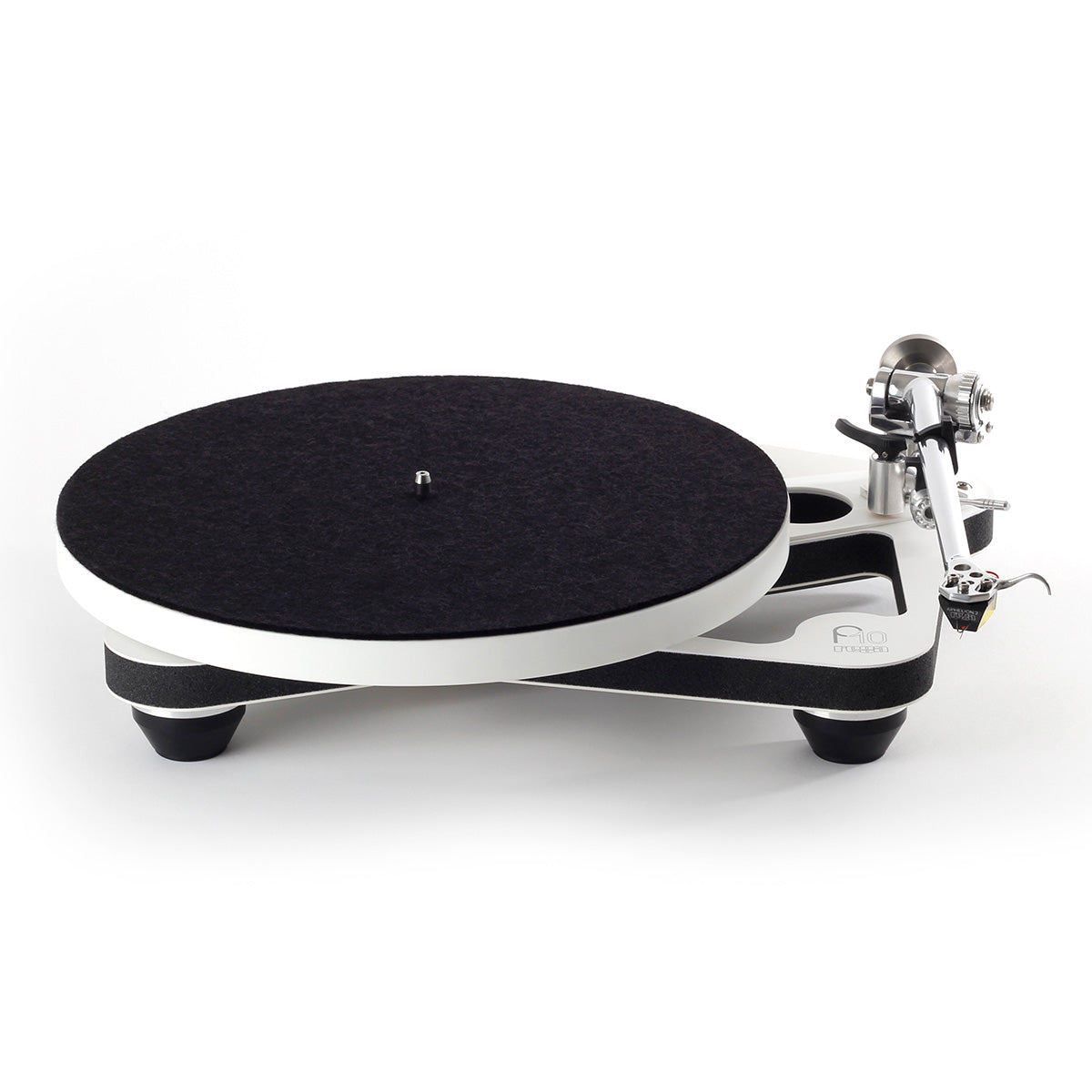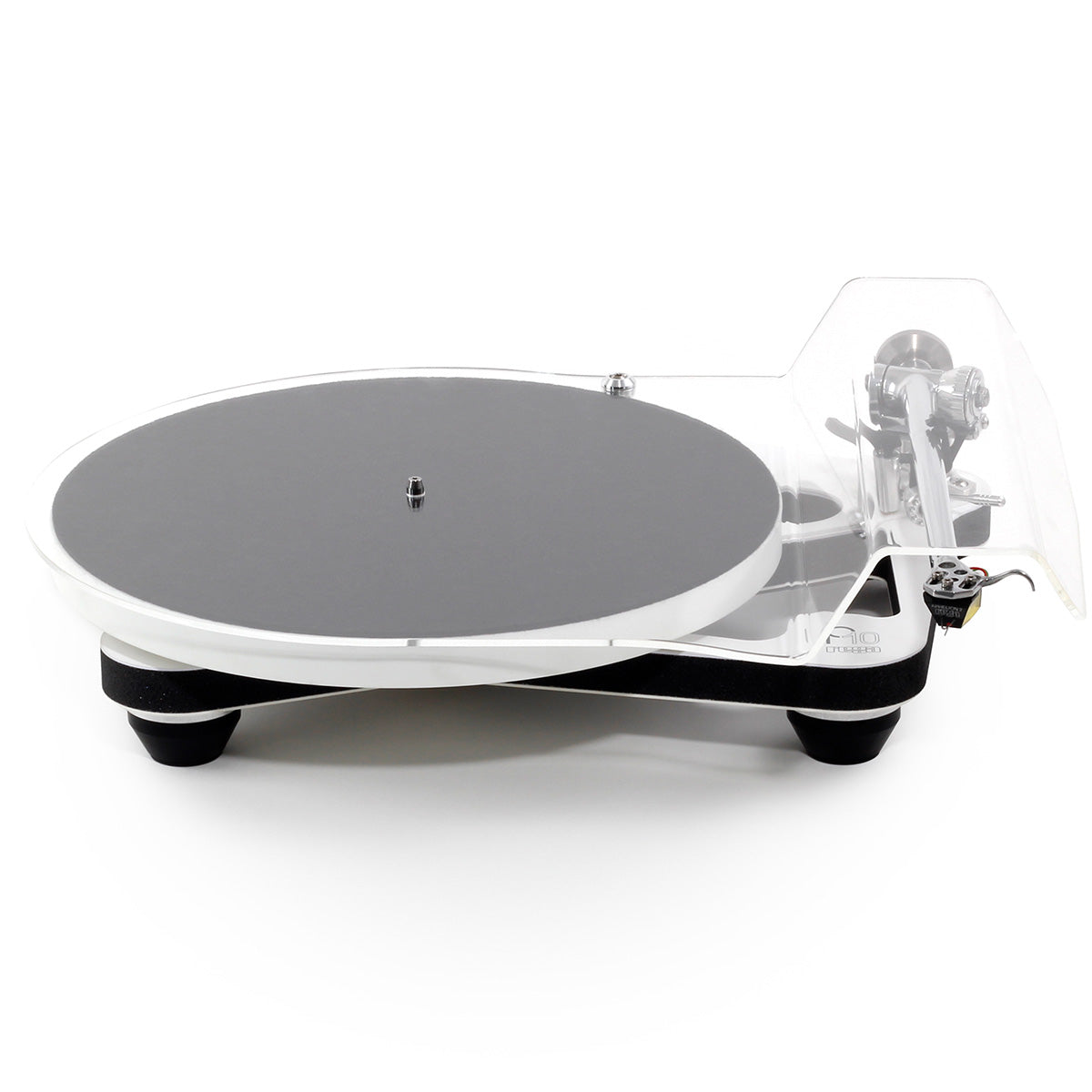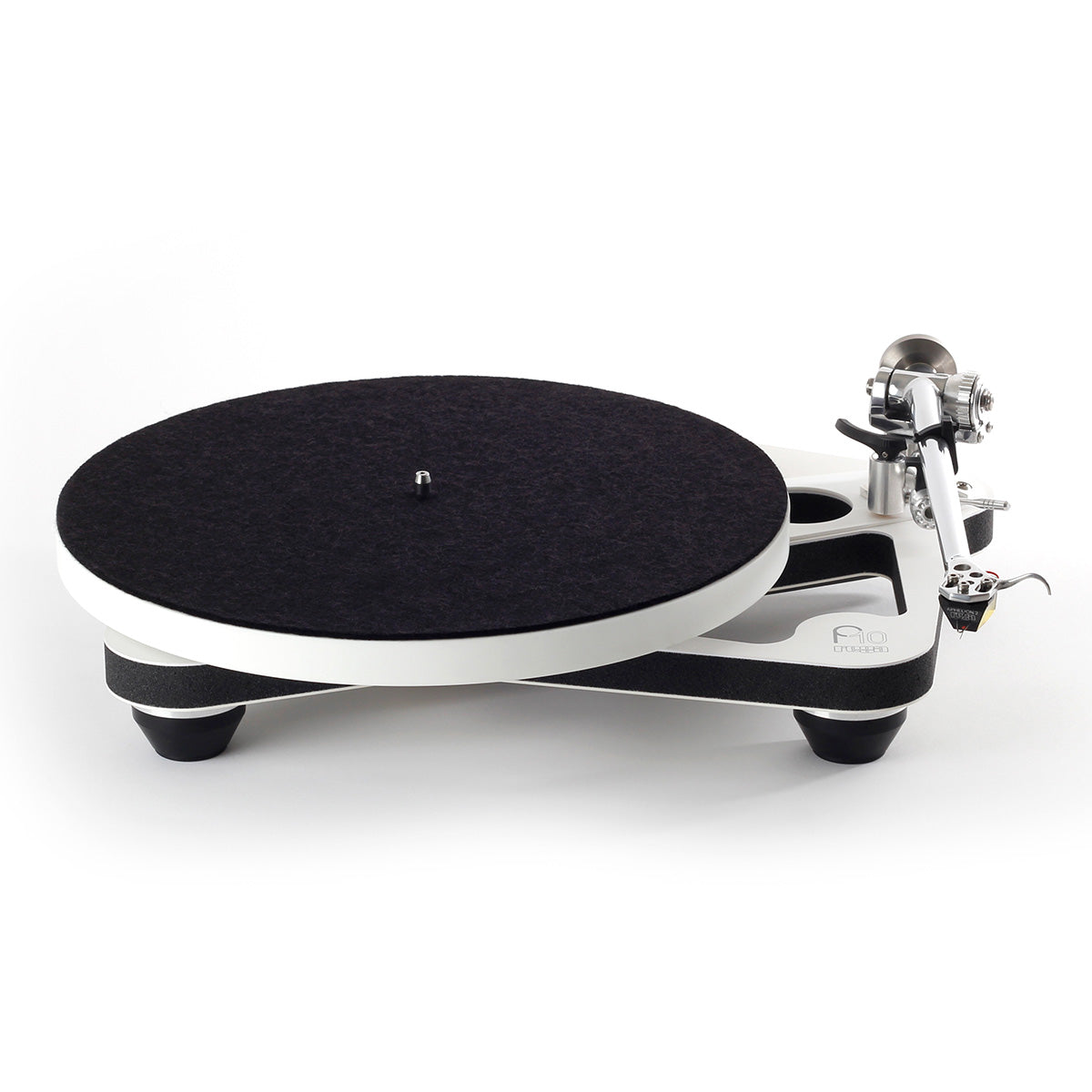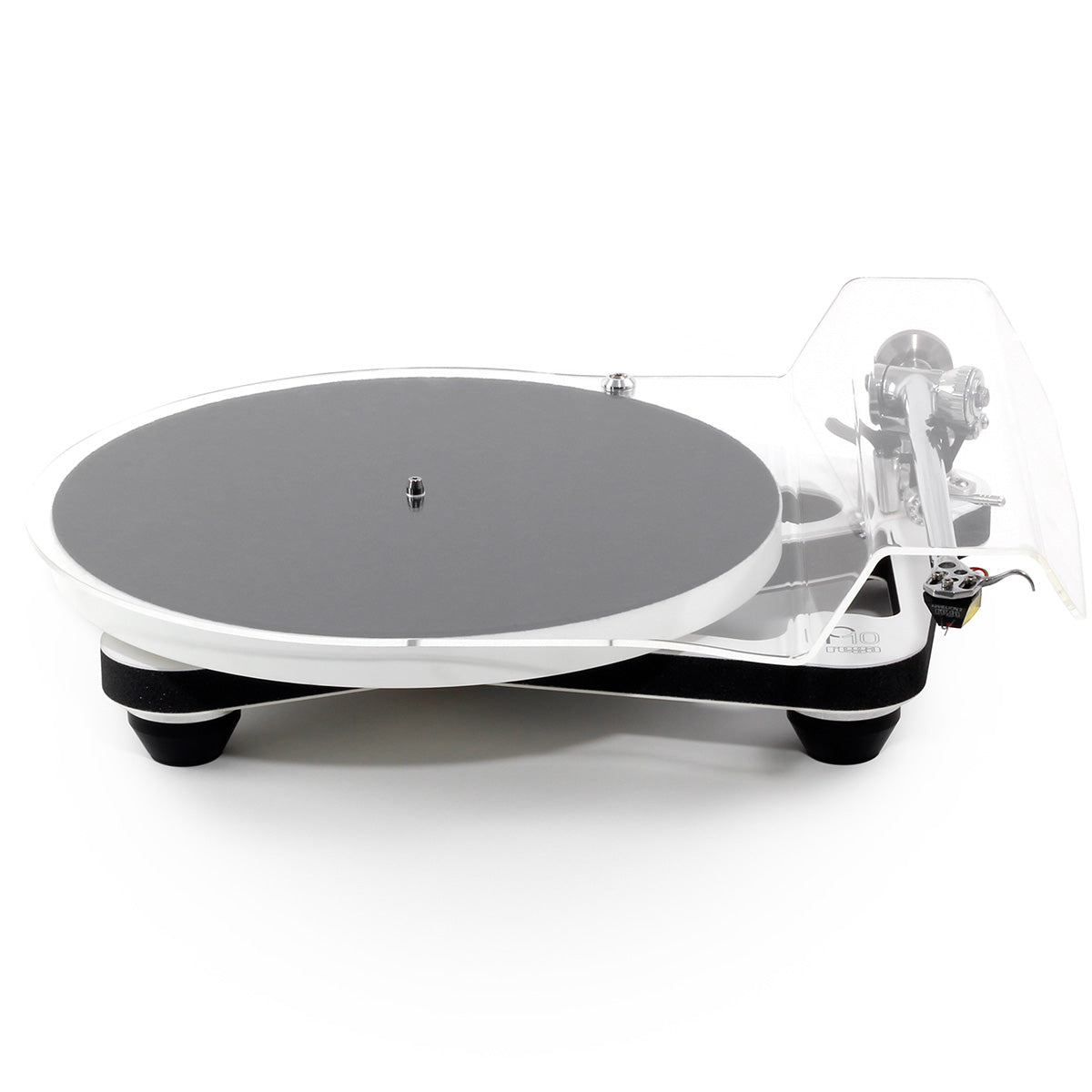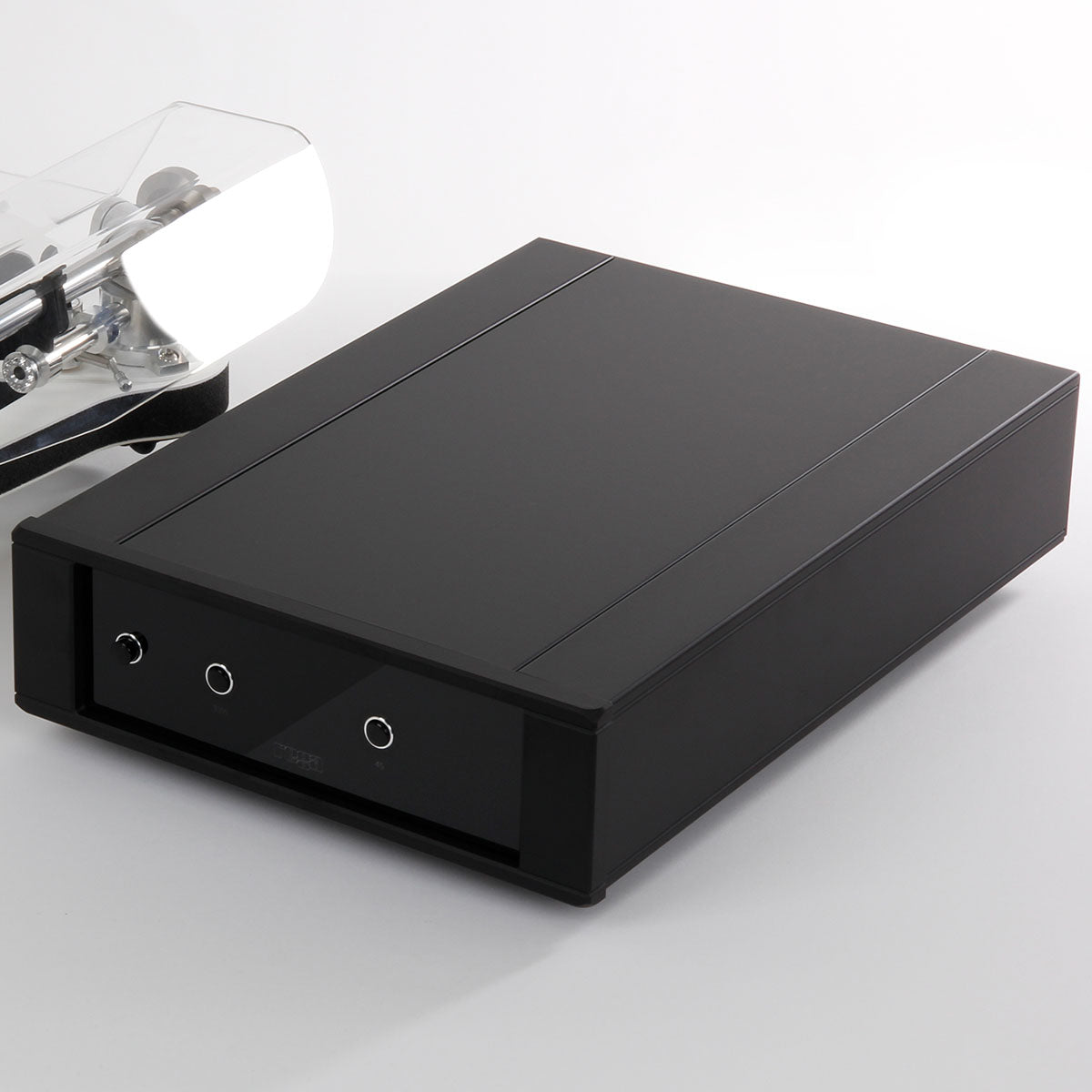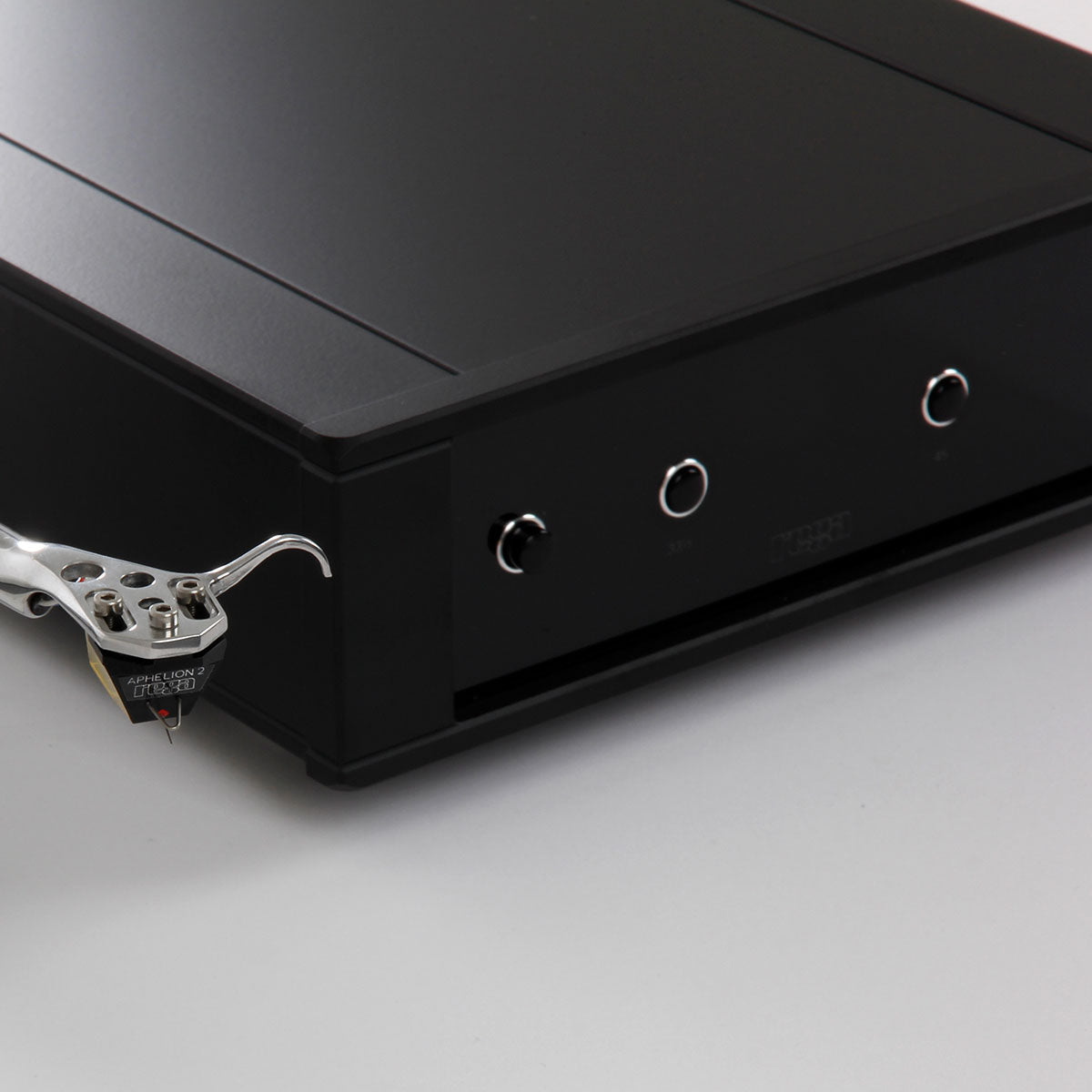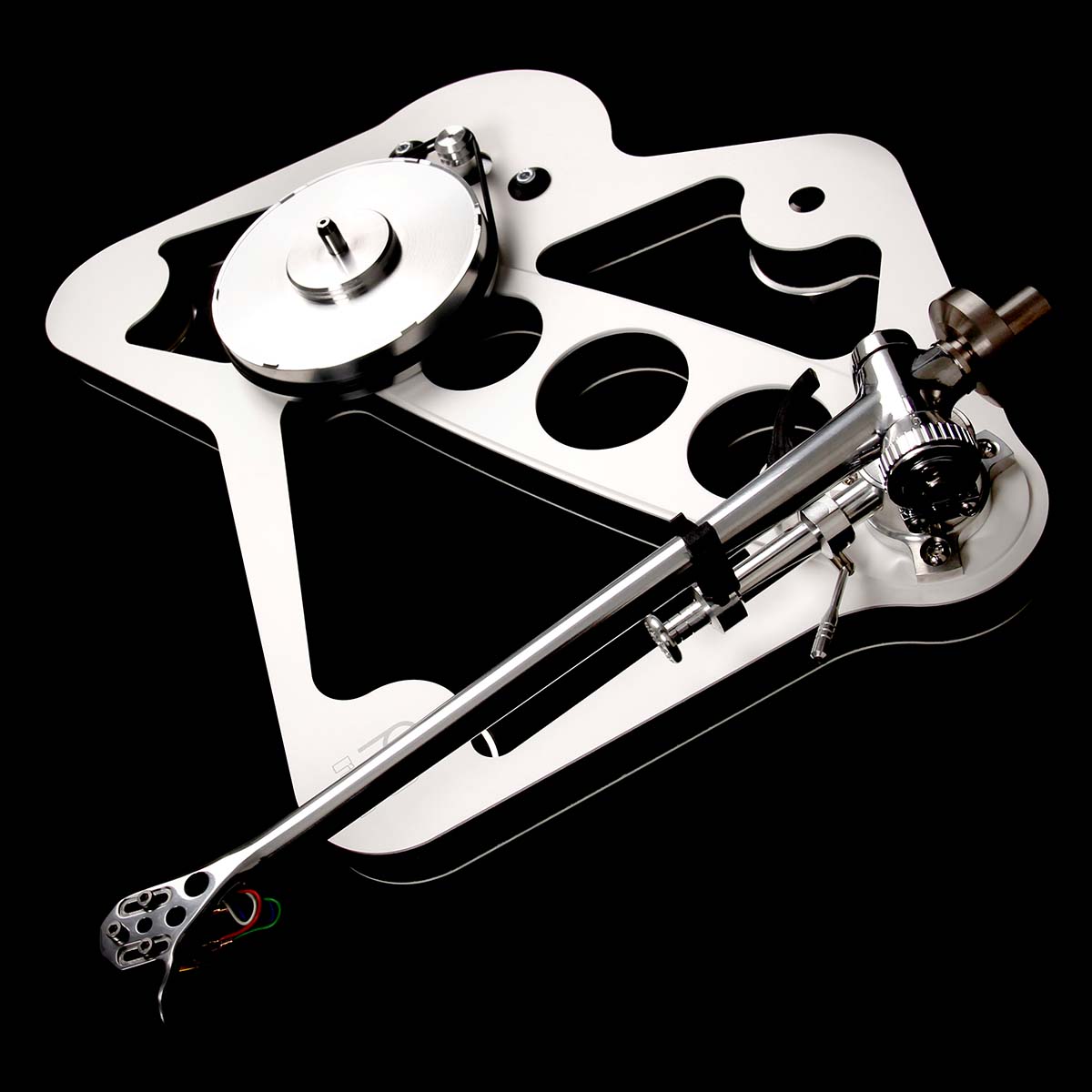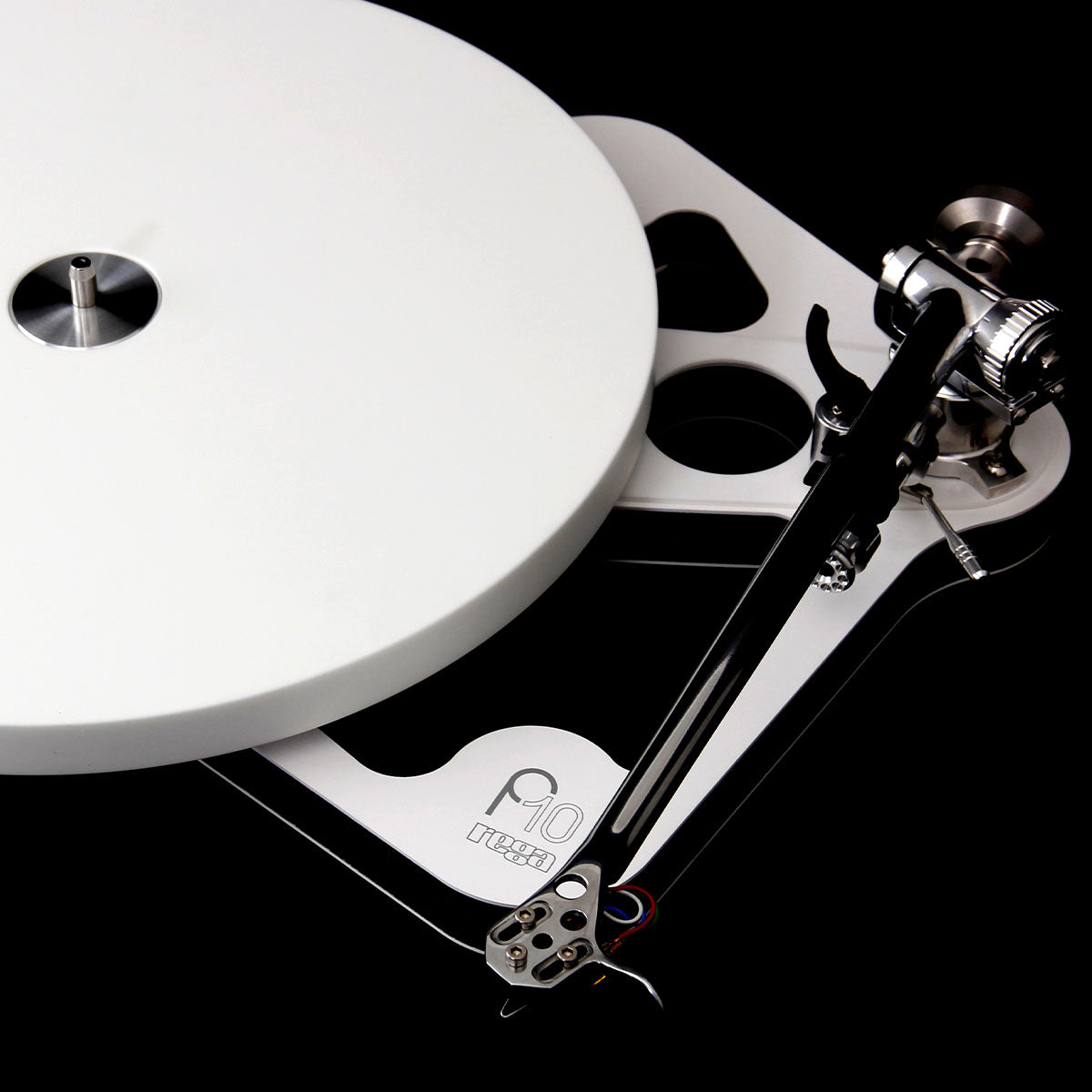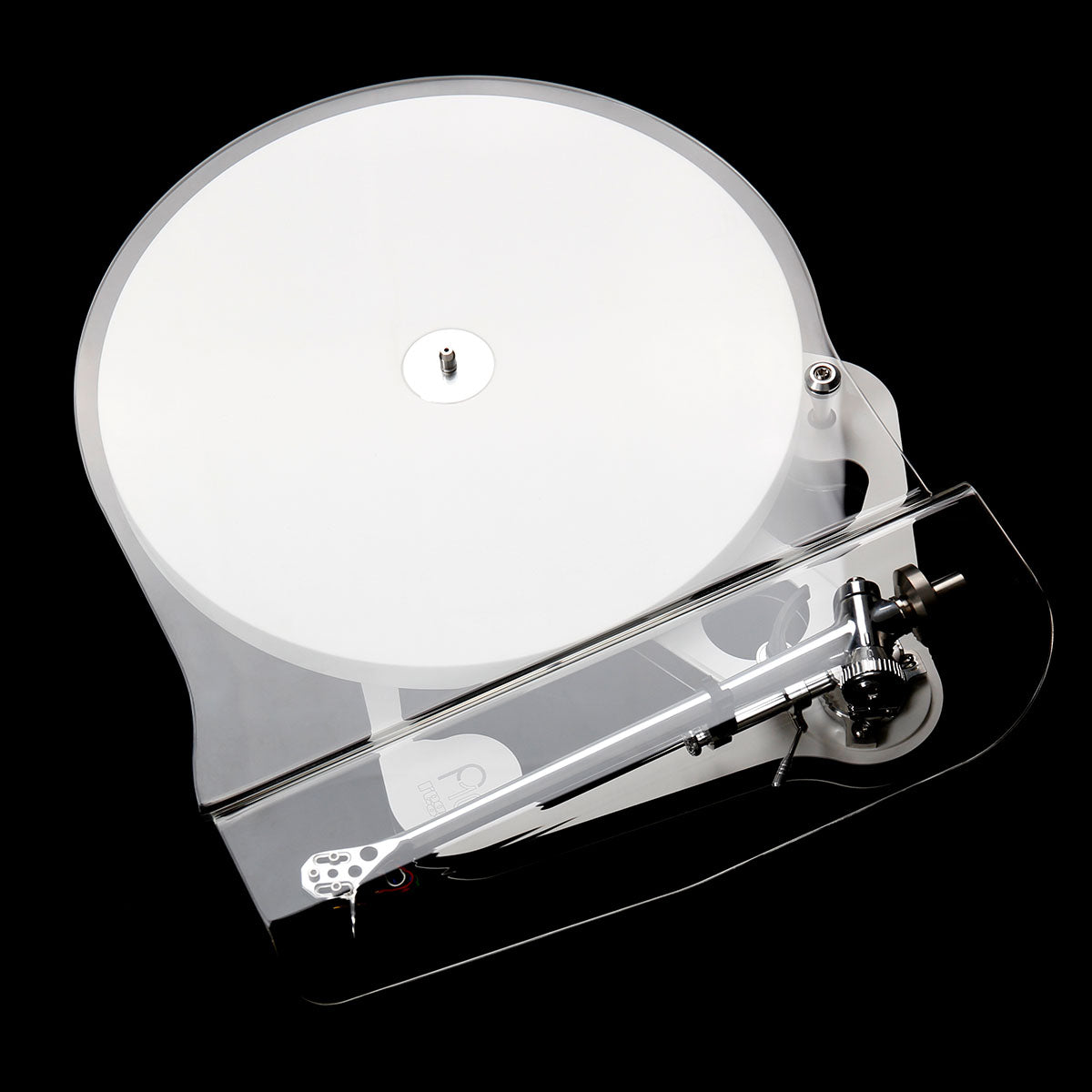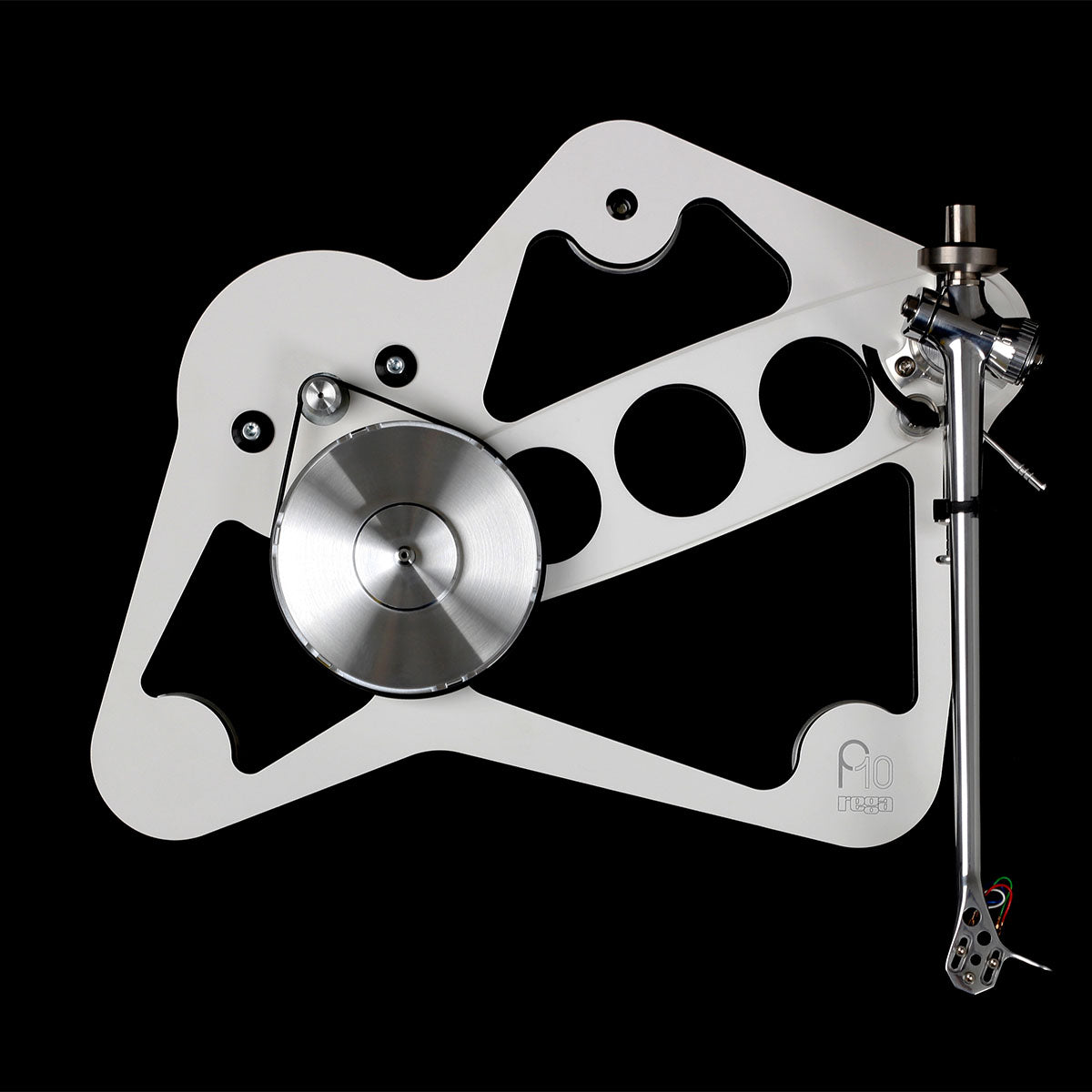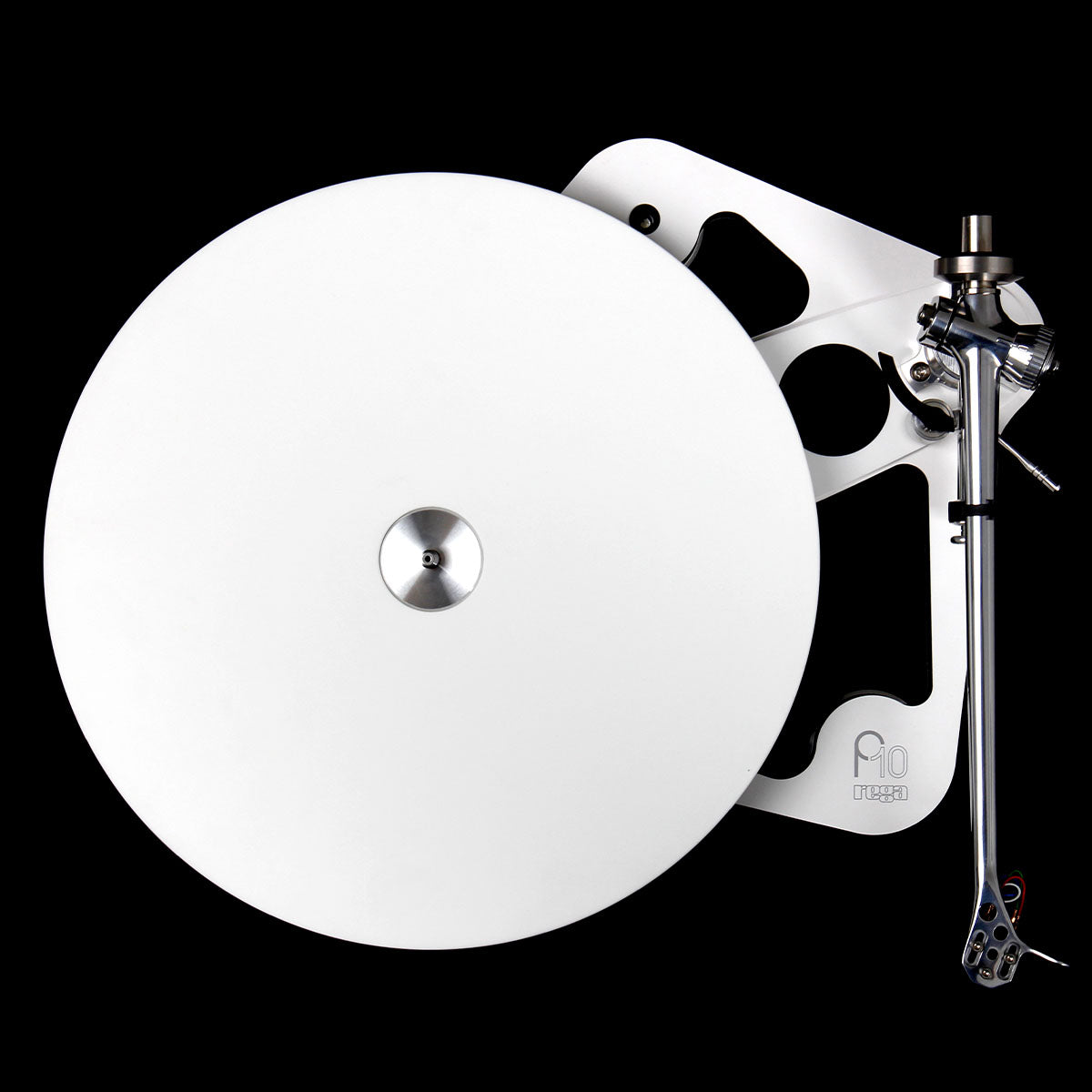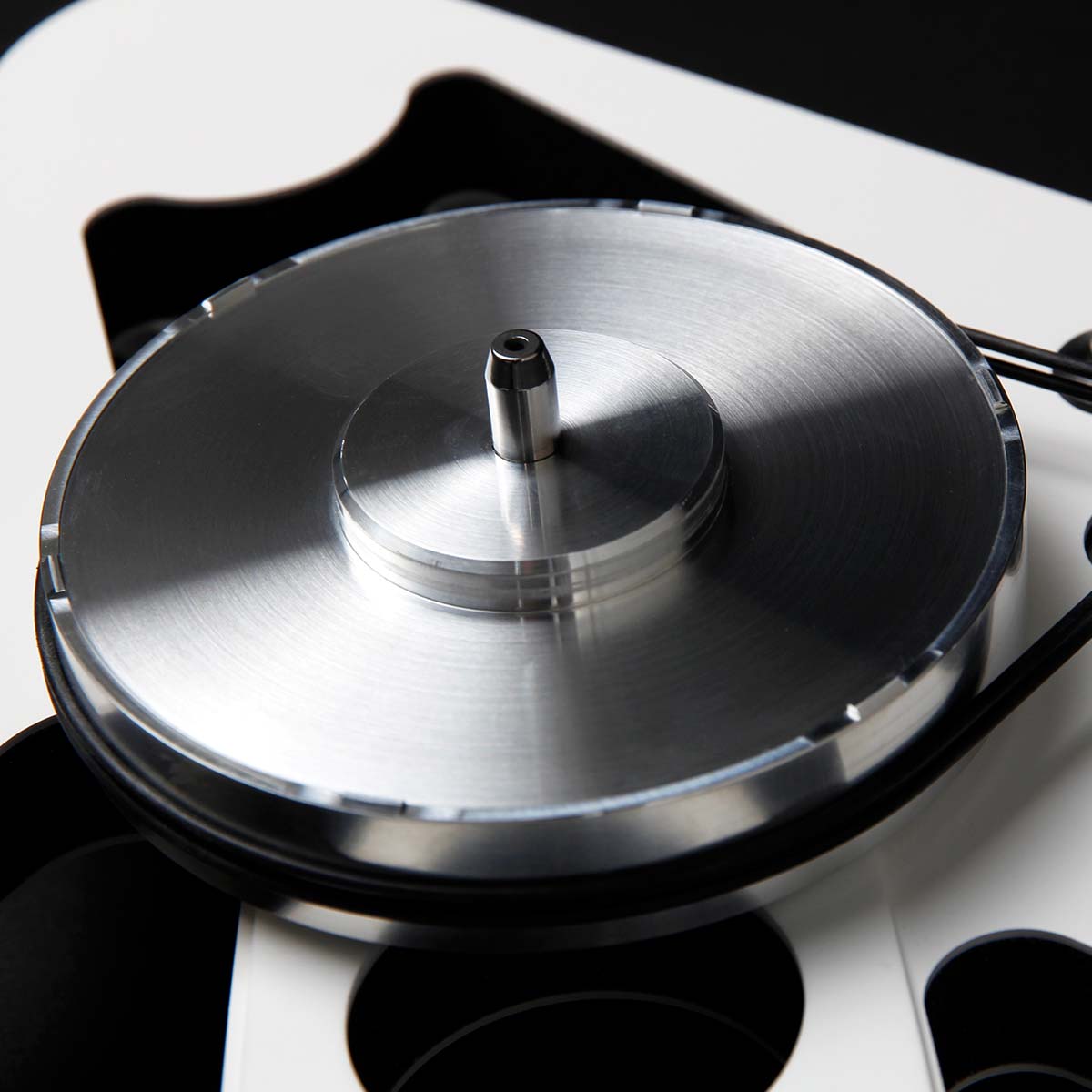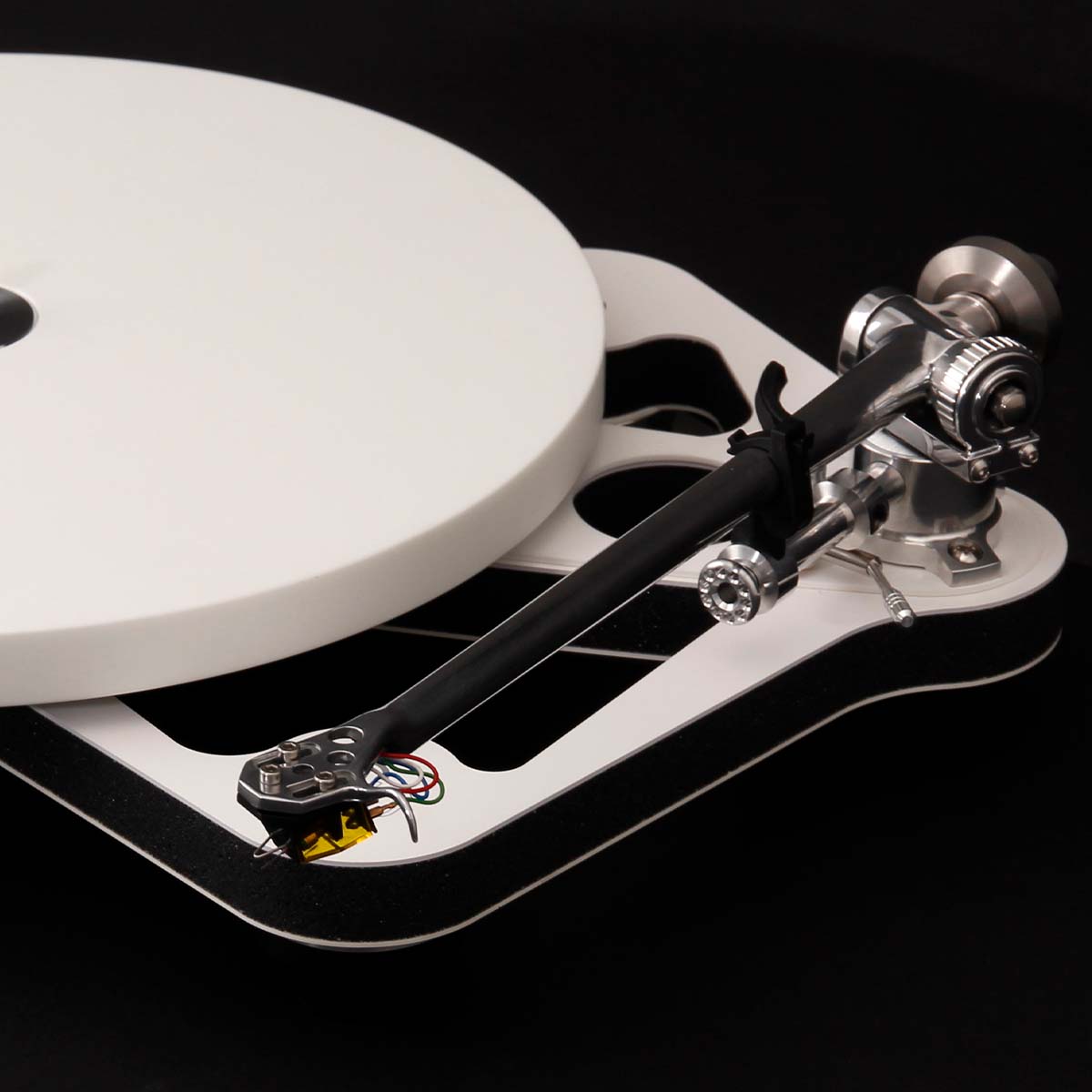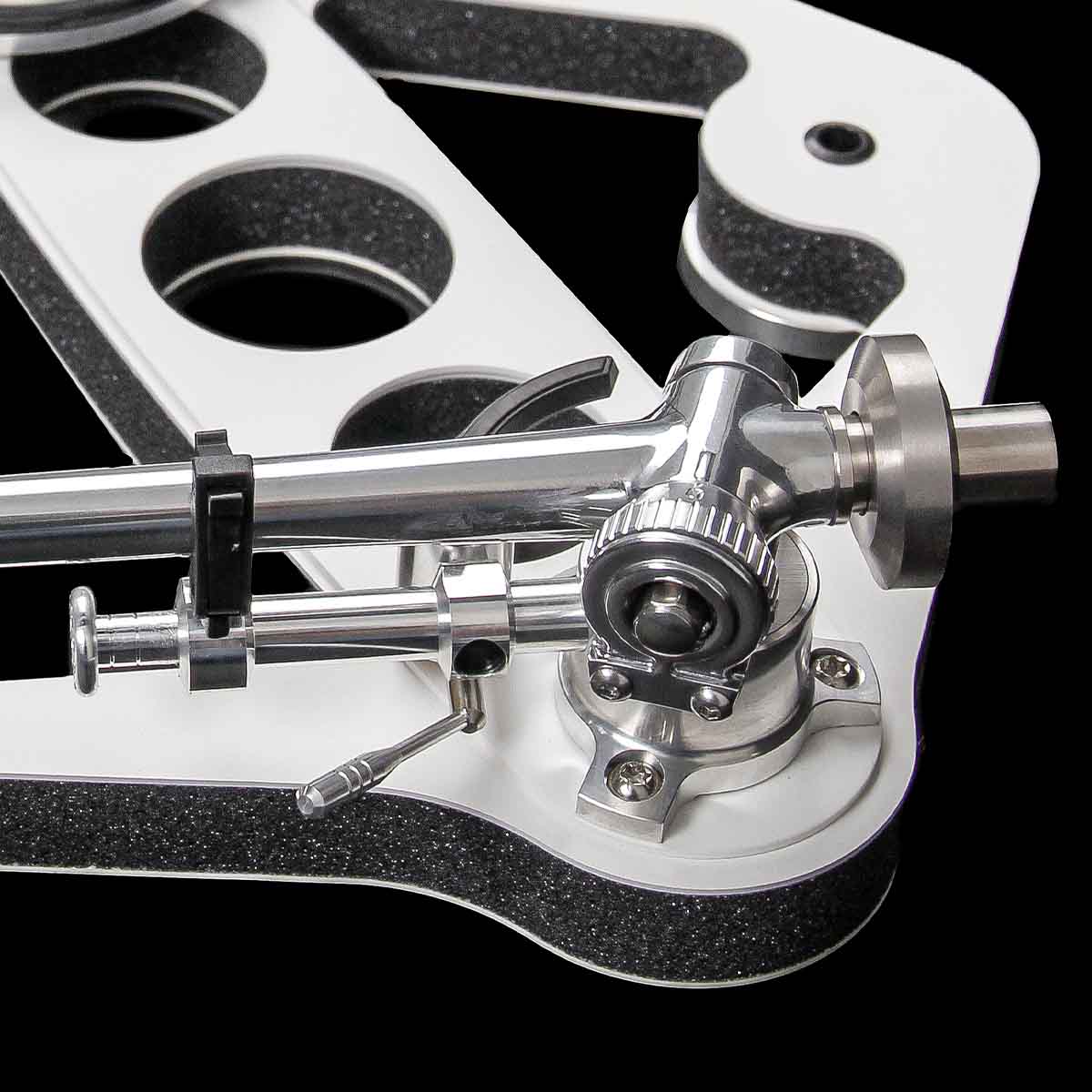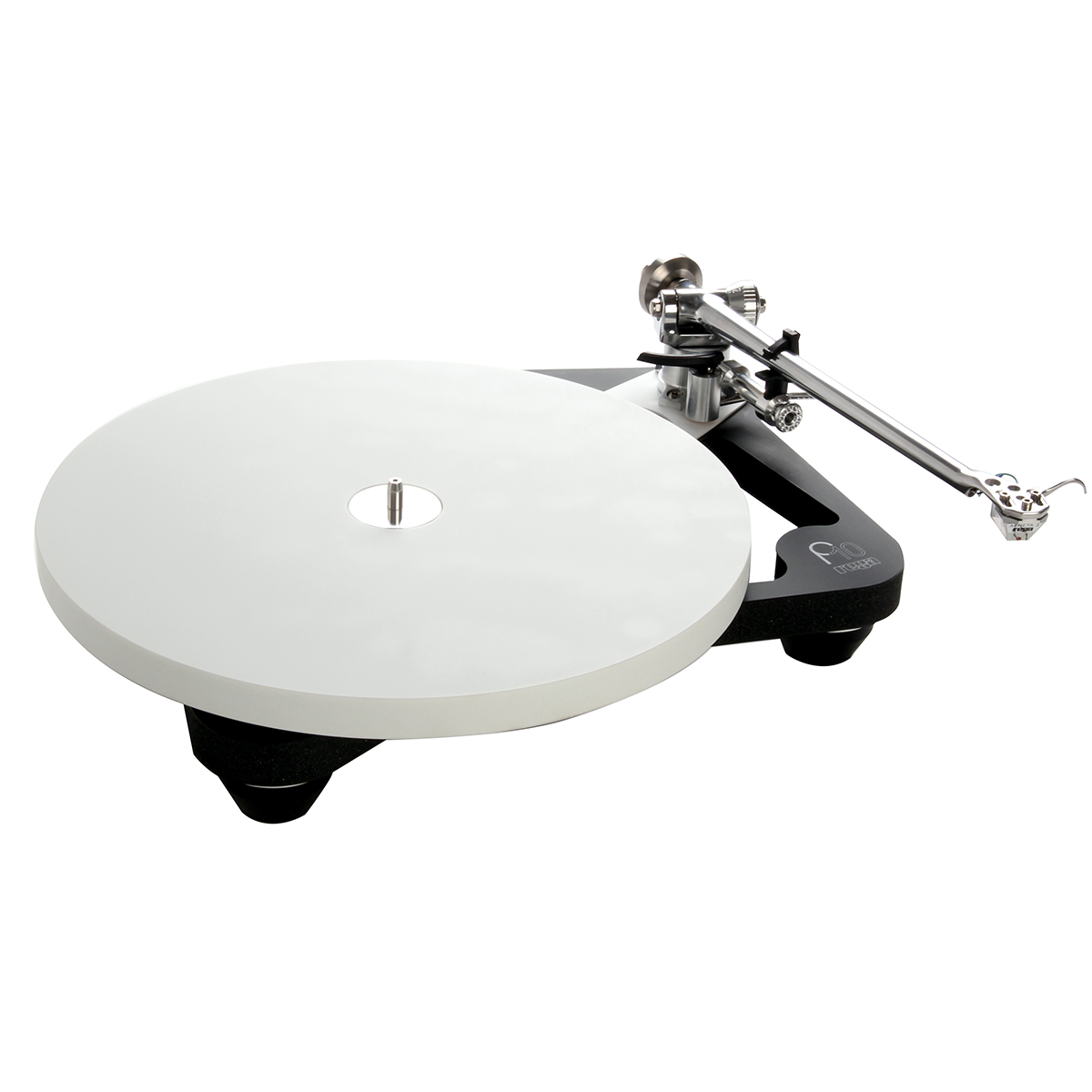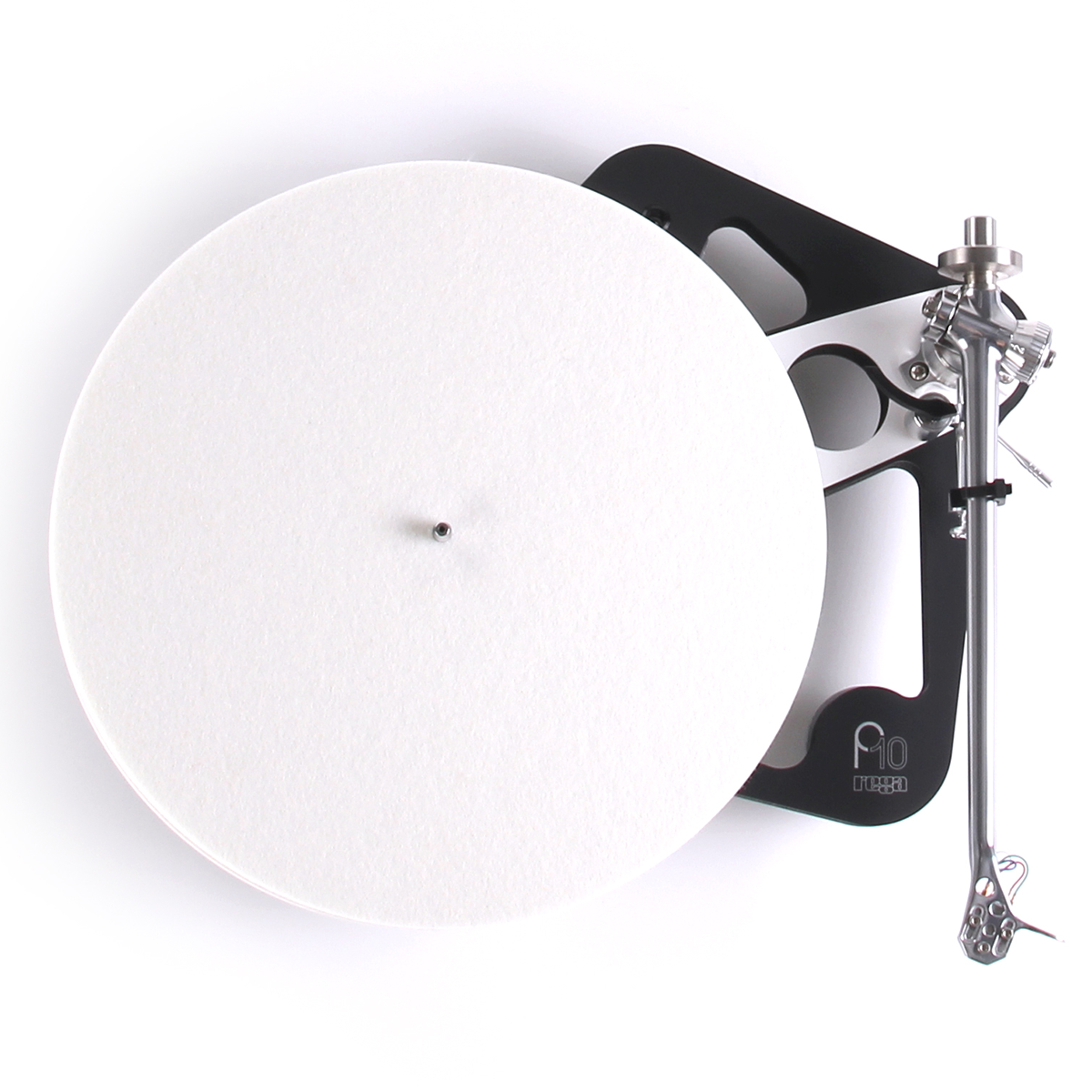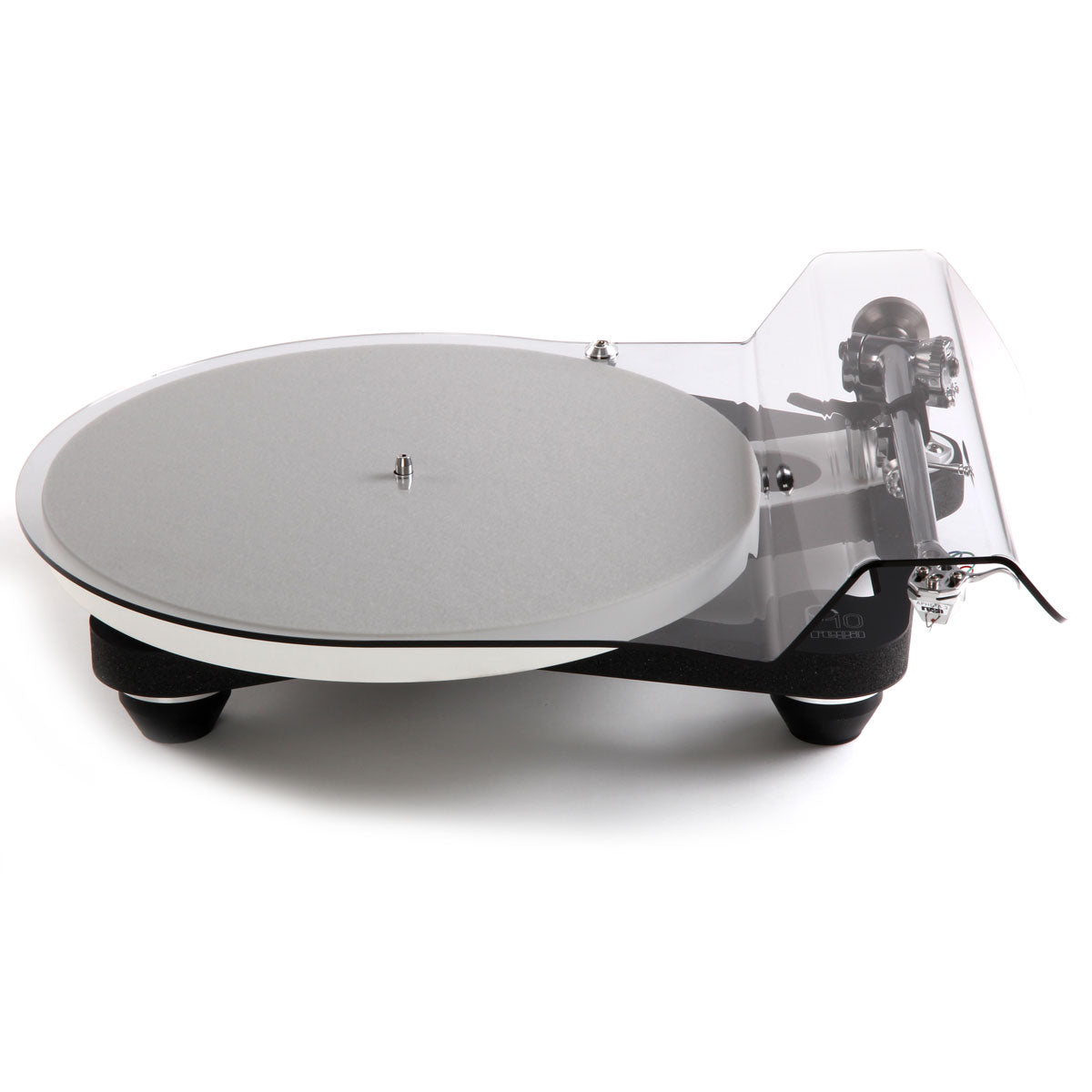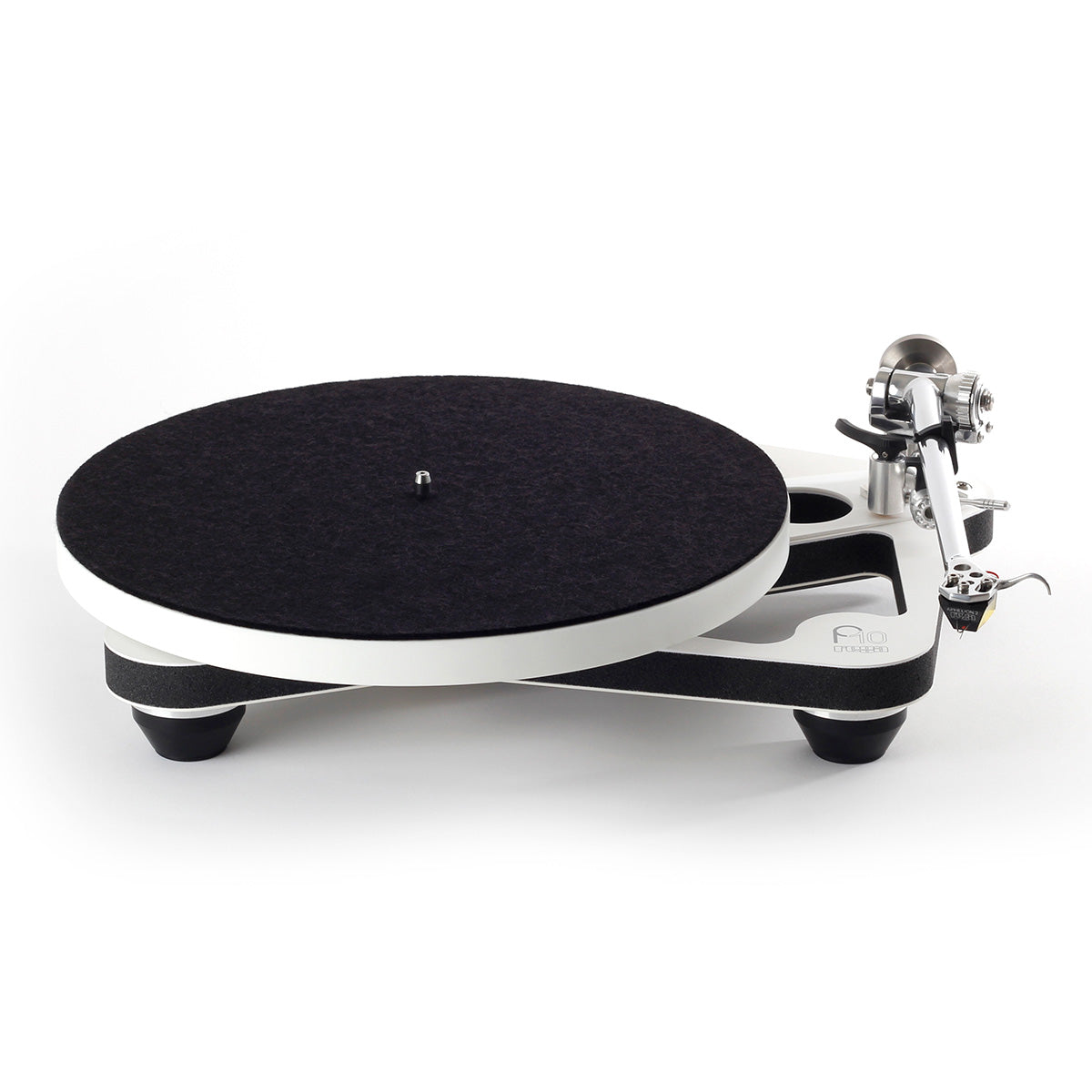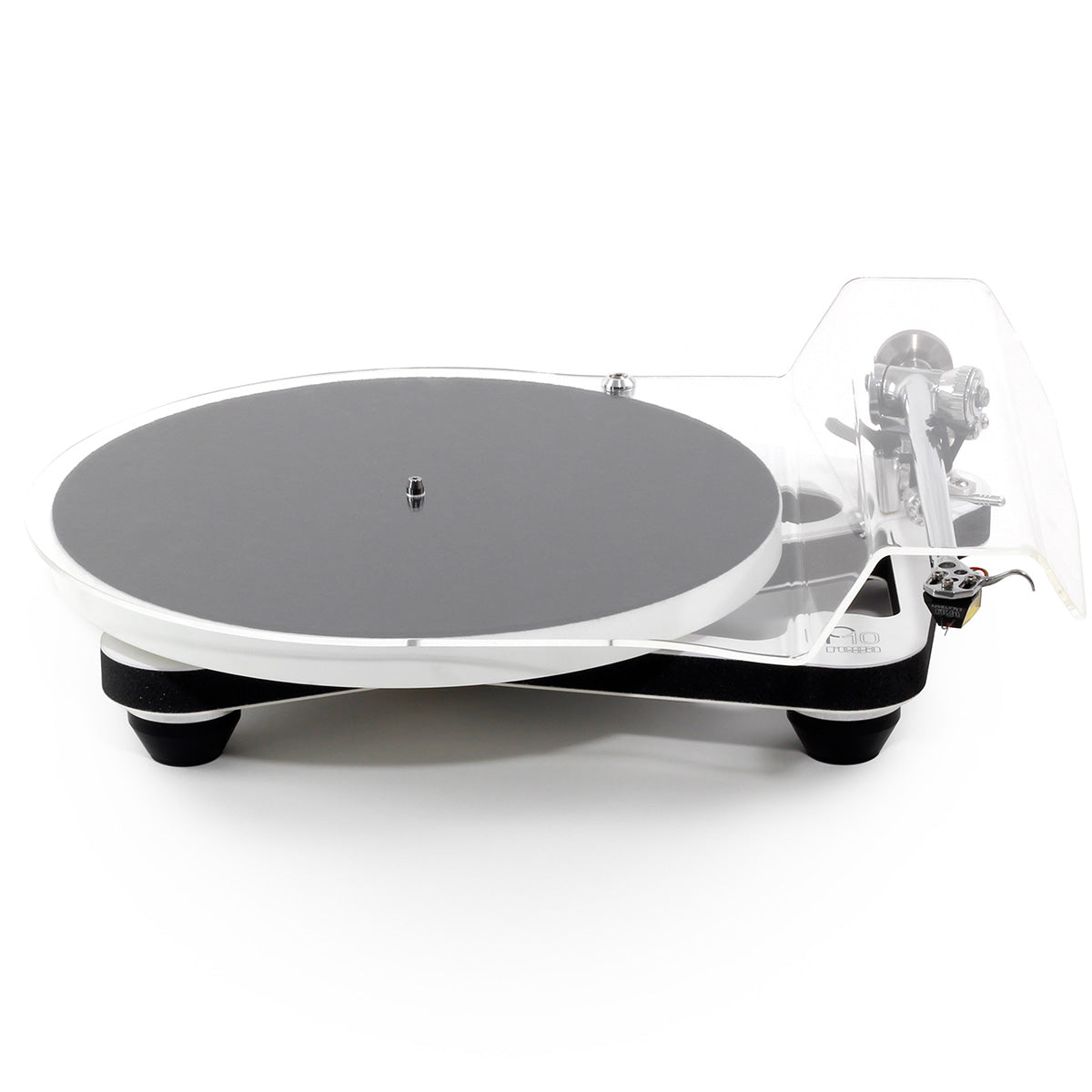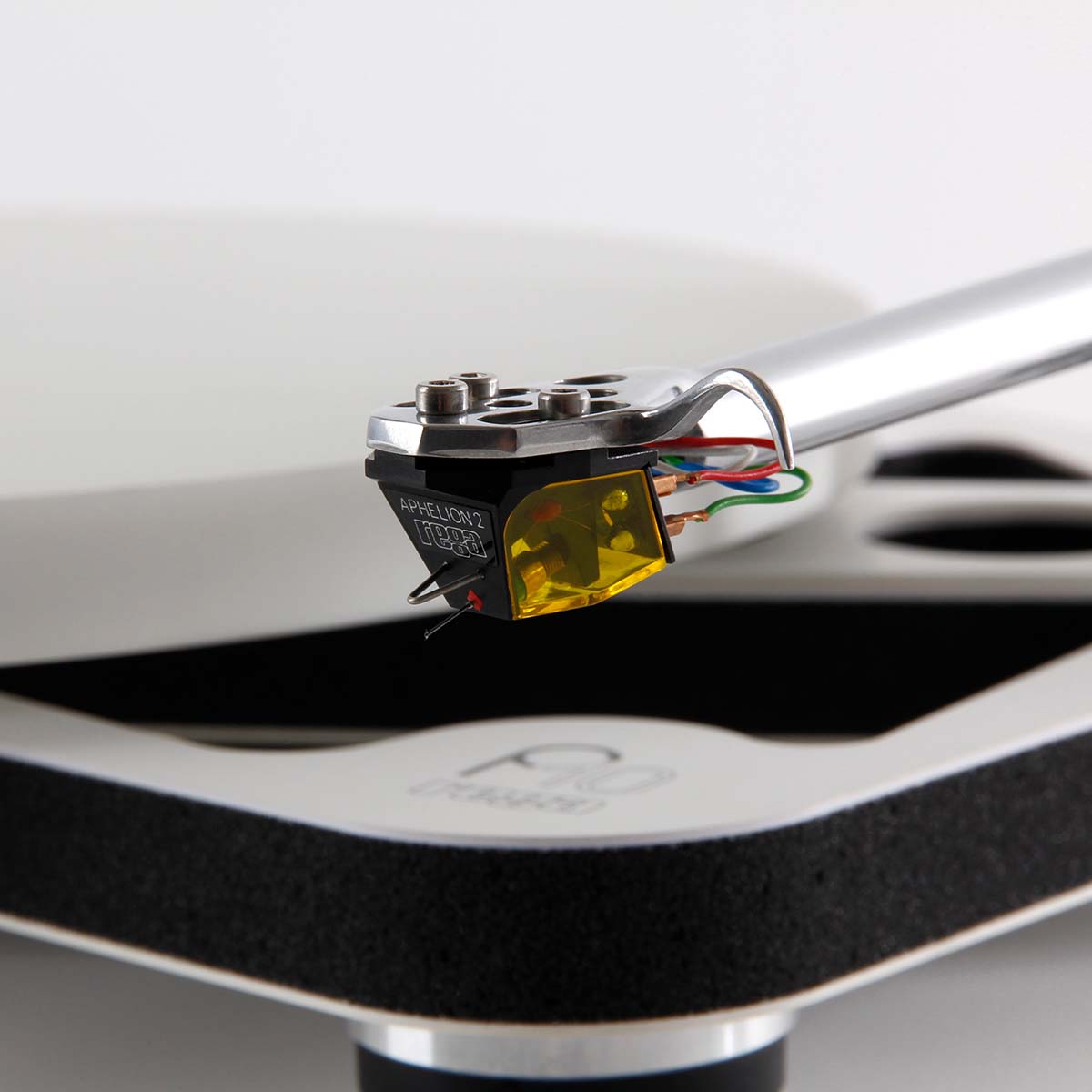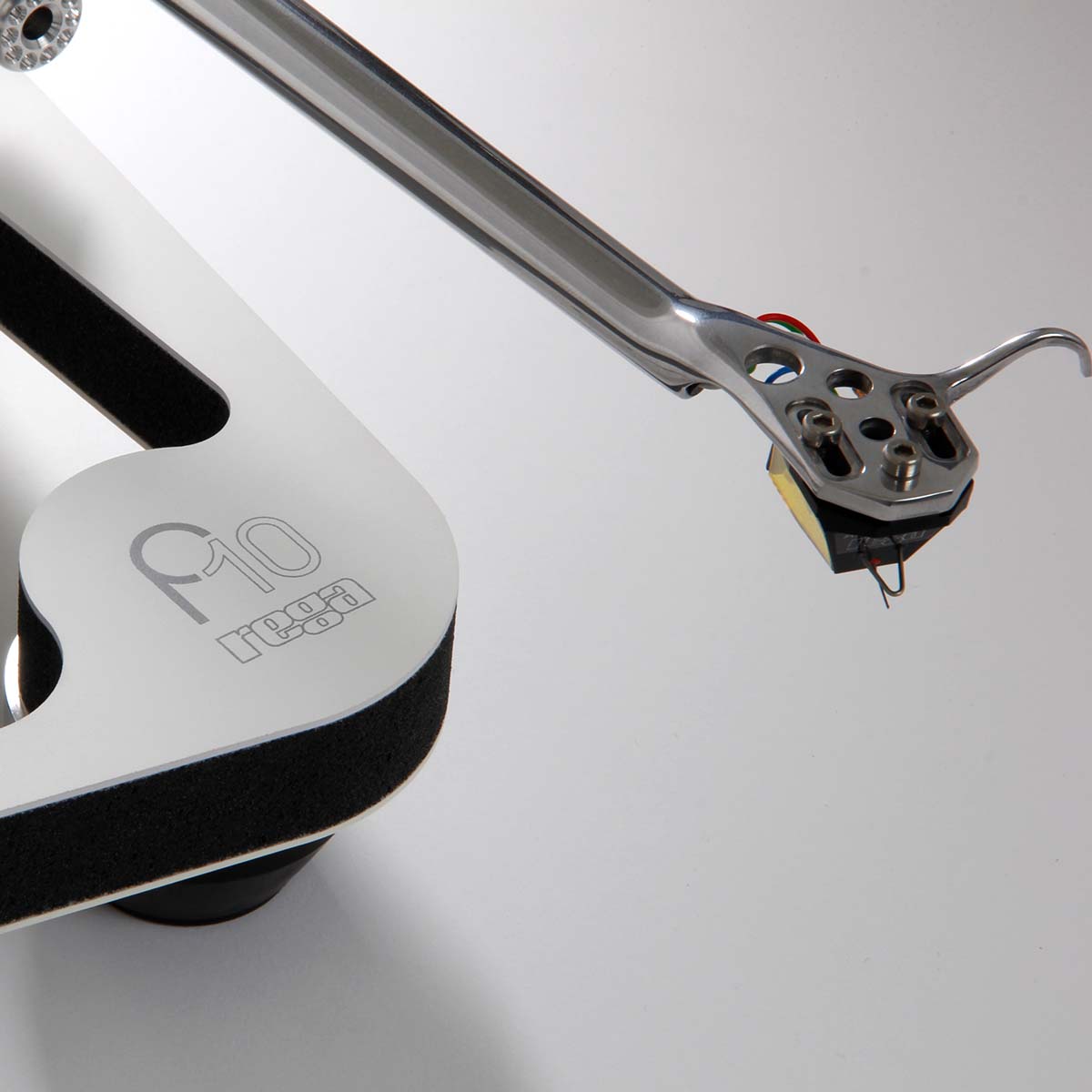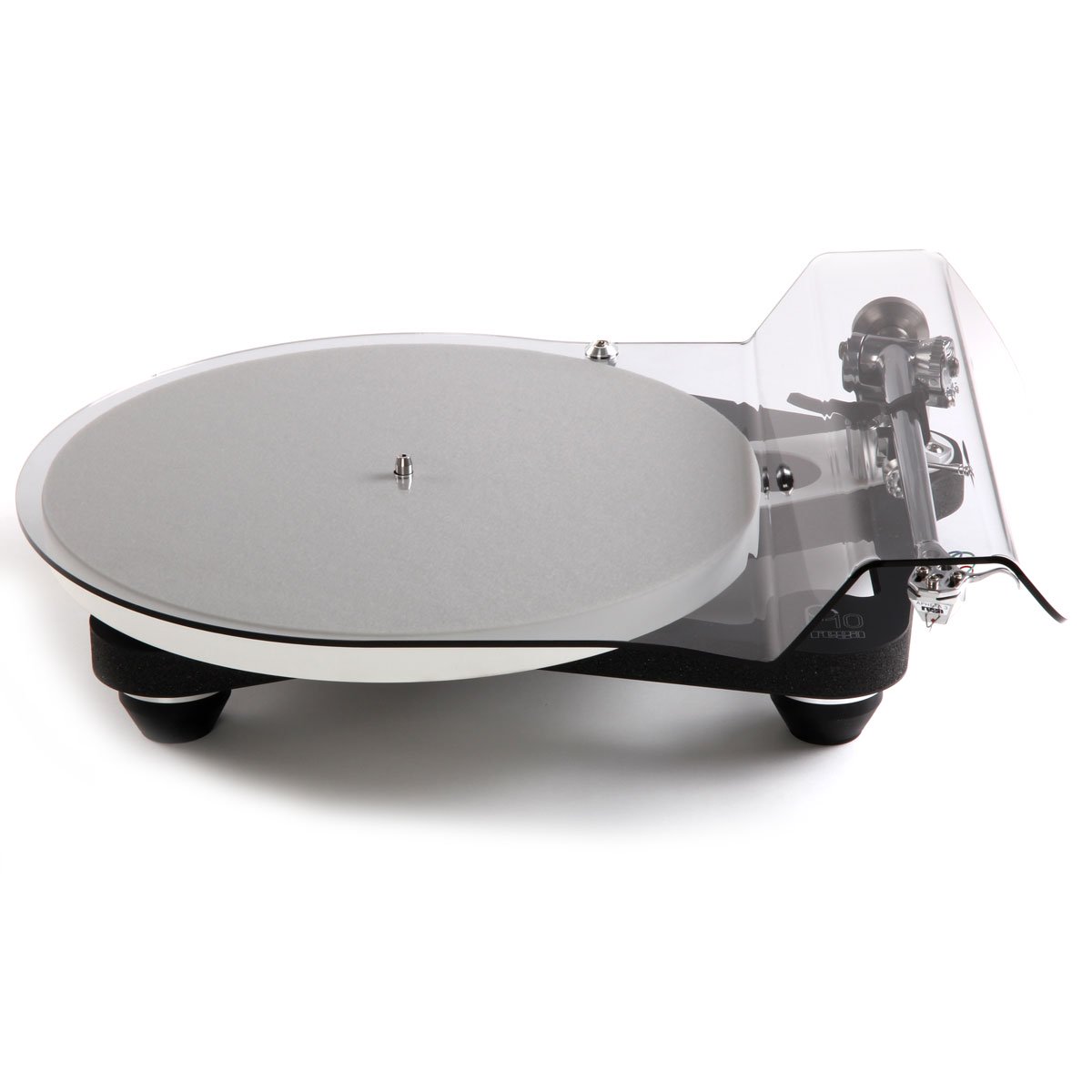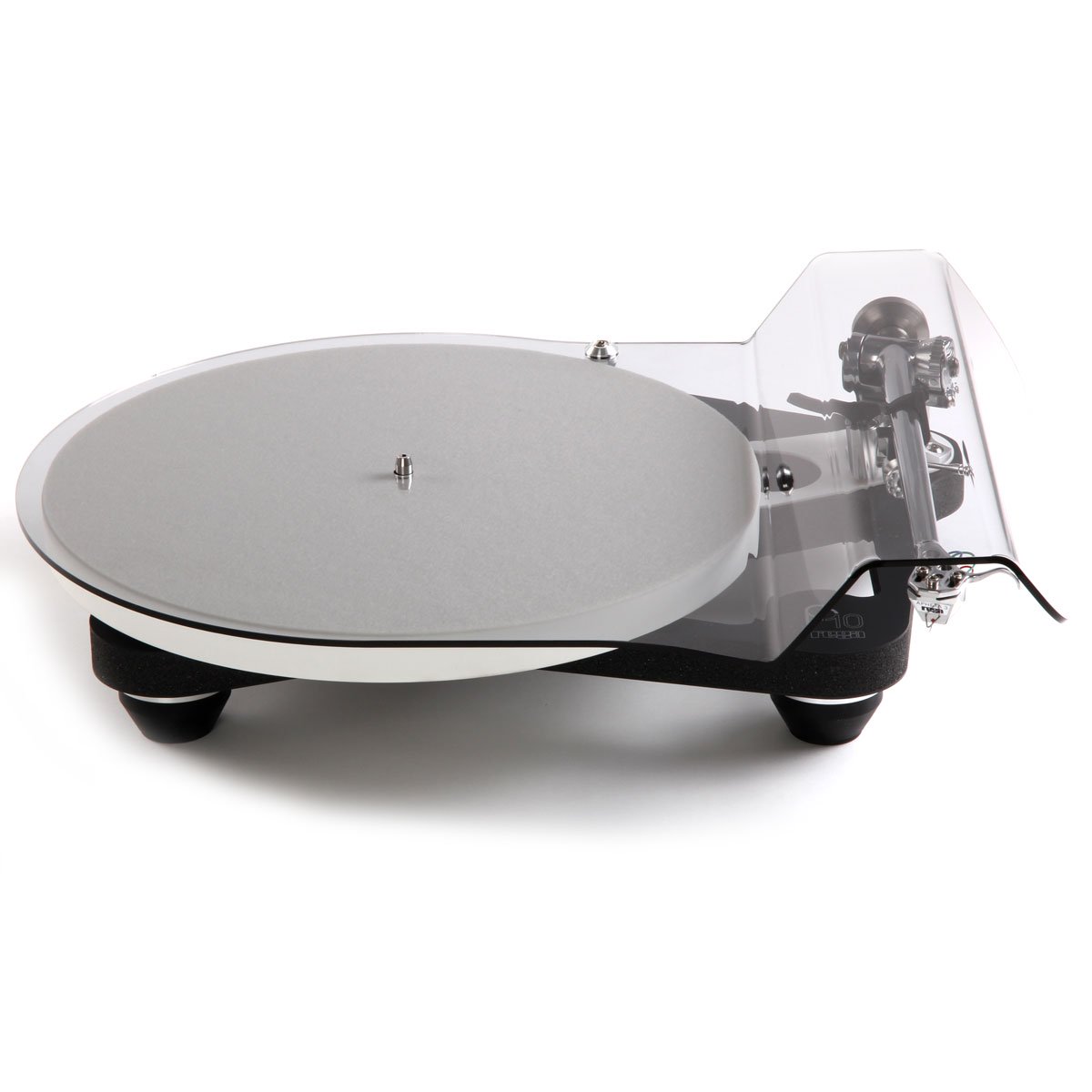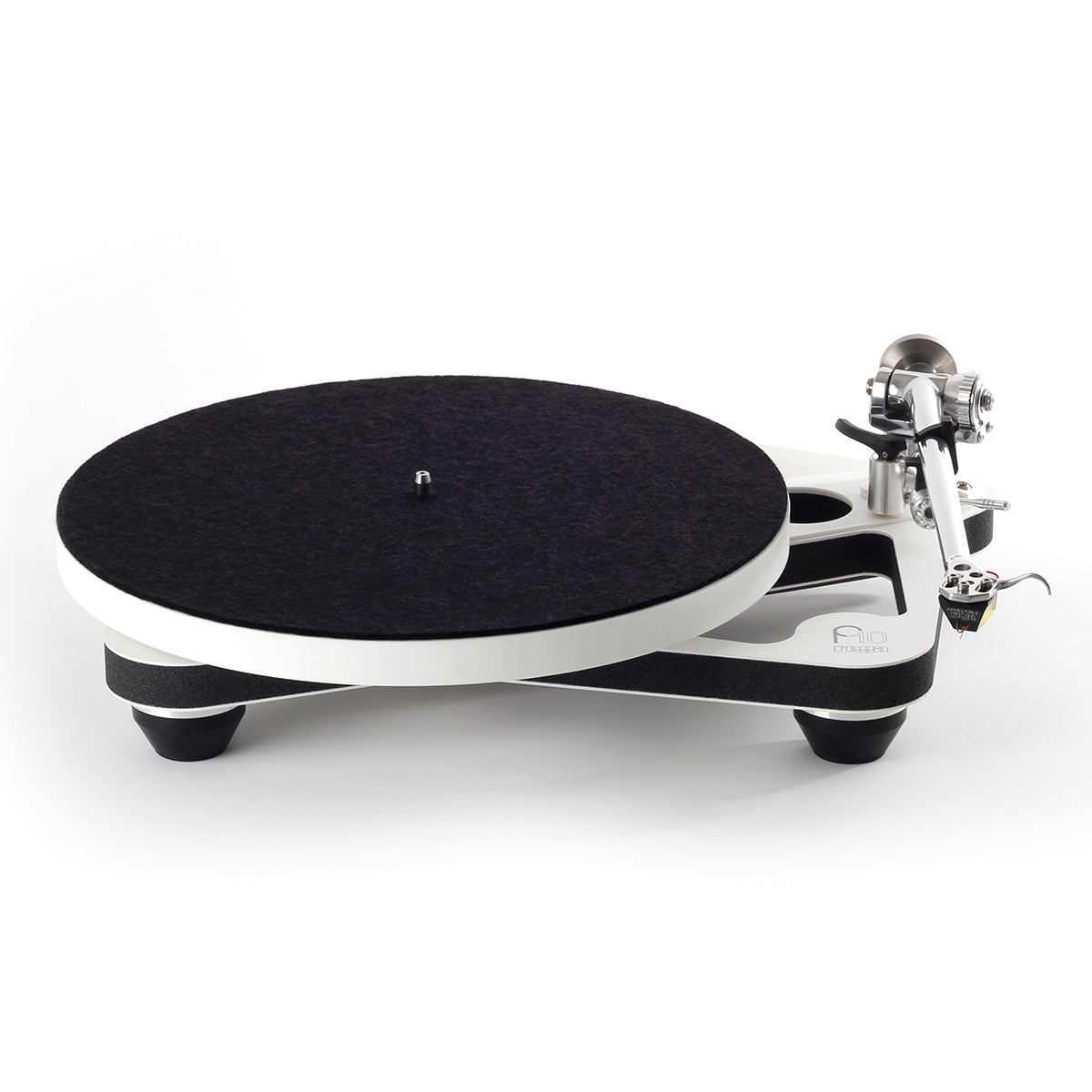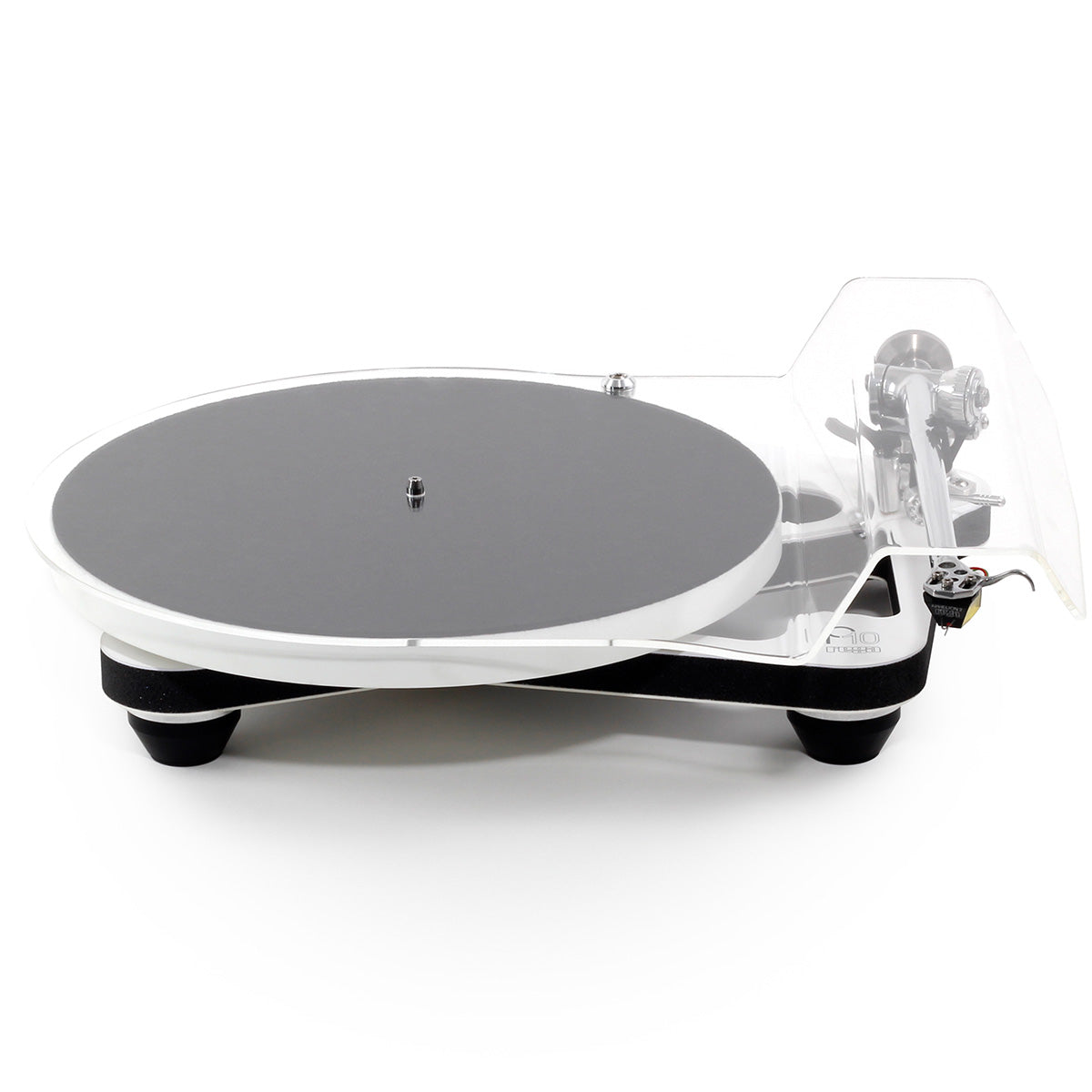Rega Planar 10
Couldn't load pickup availability
Free Shipping On All Orders, No Minimums.
We offer free 2-day shipping on most products within the continental US.
Weekdays - Orders placed by 2pm EST ship same day. Orders placed after 2pm EST will ship the following business day.
Weekends - Orders placed on Saturday and Sunday will ship Monday.
Orders requiring motor freight delivery may take more than two business days. Once your order has shipped, you'll receive a shipping confirmation email with a tracking number for easy tracking.
Orders that contain items that are currently backordered, special order, or out of stock will ship complete once all items are in-stock unless otherwise requested.
If you need it faster, you will have the option of choosing a quicker shipping option when you checkout on the website.
At this time, we do not ship internationally and orders to Hawaii and Alaska may incur an additional shipping charge. Please contact us at 888.899.8776 or email support@audioadvice.com to confirm.
Rerouting and Address Changes
We cannot make ANY address changes once an order is placed. If you are unable to accept delivery of your package as ordered, we will need to cancel your order, return the package to sender and have you replace your order through our website.
Keep the Box
We suggest you keep the shipping box or boxes for at least 30 days. It is actually a great idea to keep boxes for audio products for the life of the product. Having the box and all packing will increase the trade-in value should you decide to move up and they are handy to have should you ever need to send the unit in for repair.
How To Receive a Motor Freight Order
The trucking company will contact you to schedule a convenient time to deliver the order. Please note that you must be present for delivery.
Visually inspect the box to make sure you see no signs of damage. If you notice any damage at all, take some pictures with your phone and make a note of them on the delivery receipt the driver will ask you to sign. If it is obvious that the product is damaged, please refuse the order and contact us immediately at 888.899.8776 or email support@audioadvice.com.
Open your box as soon as possible and inspect the product for damage and contact us if you find anything wrong.
FedEx Freight Service Comparison
| Feature / Service | Scheduled Curbside Delivery | White Glove Delivery |
|---|---|---|
| Scheduled delivery appointment | ✔ | ✔ |
| Delivery location | Ground level only (garage, front door, loading dock) | Room of choice, any floor |
| Delivery team | 1 person | 2 people |
| Placement inside home/business | ✘ | ✔ |
| Upstairs / downstairs delivery | ✘ | ✔ |
| Unpacking | ✘ | ✔ (upon request) |
| Packaging removal | ✘ | ✔ (upon request) |
| Assembly / installation | ✘ | ✘ |
| Old item removal | ✘ | ✘ |
At Audio Advice, we pride ourselves on customer satisfaction. We'll bend over backward to make sure you're 100% satisfied and we won't accept anything less. We offer 30-day hassle-free returns and personalized service from real, live people.
If an item doesn't meet your expectations, you may return or exchange it in its original condition and packaging within 30 days for a full refund, minus shipping fees. Items shipped back in like new condition through standard shipping carriers will only incur a flat fee of $15 to return. If the items were initially shipped through free scheduled delivery via motor freight (commonly referred to as LTL), returning them will result in return shipping fees starting at $150. These items include but are not limited to, oversized items such as TVs, certain subwoofers, floorstanding speakers, furniture, and most items weighing over 75 pounds. Return fees will also apply for exchanges. We want to treat your system as if it is our own and want you to be completely satisfied with your purchase.
Please see the instructions below. We only accept returns for any product purchased directly from our website. If merchandise is not returned in its original condition or is missing packaging, manuals, accessories or other parts, or the resale value of the product has been impaired, a partial refund will be given and calculated on a case-by-case basis.
Non-Returnable Items
The following items cannot be returned or cancelled:
- Special/Custom Order Items
- Open Box Products
- Gift Cards
- In-ear headphones cannot be returned once the packaging has been opened due to personal hygiene reasons. Please contact our customer care team if you'd like help choosing.
-
Turntables With a Broken Stylus: All turntables ship out with the stylus intact. If you return a turntable or phono cartridge with a broken or missing stylus you will be subject to a return fee. Please be careful when setting up your turntable and contact us with any questions.
Is It Easy To Return An Item?
Yes, simply give us a call at 888.899.8776 or you can email our support team at support@audioadvice.com. Many times our team of experts can help figure out why the product might not be working like you expected and get things fixed over the phone, so don’t be surprised if we ask a few questions, we love troubleshooting!
If our tech help can not make you happy, we will email over a return shipping label with a Return Number.
Hopefully, you saved all of the original item’s box and packaging inserts. You will want to pack back up your return or exchange in the same way it came out of the original box. Once you have everything packaged correctly, tape the box on the top and bottom to assure it stays together. If Audio Advice shipped the item to you inside a second box, it's a good idea to use that same extra box to help prevent damage on its way back to us. To avoid it accidentally coming back to you, use a magic marker to cross out the old shipping label or just tear it off.
The return shipping label we send you will have our address on it, just make sure you take the box to the right shipper (UPS, FEDEX, or USPS) as per the label.
If you are close to one of our stores, please let us know if it is more convenient for you to return it to us directly. You will still need to get a return number by contacting us and shipping and/or restocking charges may apply.
When Will I See My Refund?
It usually takes around 7-14 days for the refund to show up on the payment method you used. We do inspect all returns for damage and accuracy of the item inside the box before issuing a refund. Some items may be subject to shipping and restocking fees.
Can I Exchange My Purchase For Something Different?
Sometimes those big speakers just don’t fit in the room or you might have bought a small subwoofer and later found out you’d love a bigger one. If you would like to make an exchange within 30 days of receiving your item, just give us a call at 888.899.8776 or email support@audioadvice.com and we will help work out the details. Additional shipping charges and return costs may apply.
How Do I Cancel An Order?
If the item has already shipped out or is a special order item, it is not possible to cancel the order. Please contact us at 888.899.8776 or email support@audioadvice.com to start the return process.
What If I Find Shipping Damage?
We need to know right away about any shipping damage. Please contact us at 888.899.8776 or email support@audioadvice.com within 48 hours of your delivery so we can get the ball rolling on making things right. It’s very helpful to take some pictures and email them to us if possible.
Can I Refuse A Shipment?
You can, but unless the item is damaged, shipping and restocking fees will be deducted from your refund. If your item arrives damaged and you are lucky enough to be there, snap some quick pics and refuse the order. Then contact us so we can get a replacement on the way.
What Happens If My Order Is Defective?
This is actually pretty rare, most consumer electronics work fine out of the box 99.9% of the time. We’d like for you to contact us first by calling 888.899.8776 or email support@audioadvice.com so we can help get to the bottom of things. If your item is indeed defective during the first 30 days, we can usually exchange it for a new, replacement unit.
What About Service After 30 Days?
Audio Advice has a great relationship with all of our brands and can help you with warranty service by the brand after our 30-day guarantee period. Even after the warranty expires, we can arrange for service by the brand on products purchased from Audio Advice. Just call 888.899.8776 or email support@audioadvice.com.
How Do You Determine A Restocking Fee?
You may not believe it, but sometimes we receive items back that were put in the box with zero packaging and are completely destroyed or are missing many of the pieces that came with the item. We also track serial numbers and will get back different serial numbers. We’ve even seen different items than what we shipped out be returned. However, it’s very important to package your return properly so that nothing goes missing or gets damaged in shipping, which will result in a restocking fee or even no refund at all. If a product is opened and the market value of the product is reduced, then a restocking fee may be applied to the cost of restocking and the reduced market value of the product. The bottom line is if you treat us fairly, we will do the same.
Audio Advice strives to provide industry-leading support and service while also maintaining the lowest prices available on products for our customers. We work hard with our vendors to bring our customers the best products at each price point. As a part of that process, we work with our vendors to provide the lowest pricing in our stores and on our website.
Our prices should always be the same as any other authorized dealer, including big-box retailers and major online retailers.
If you believe that you have found a lower advertised price from a legitimate authorized seller, call us and let us know so we can make sure we can correct any inadvertent error on our side. As a matter of policy, we update our prices automatically if a vendor changes its authorized pricing policies, so we generally have the best prices all the time. Increasingly, there are knock-off copies of products online, usually sold by non-authorized dealers.
Please be sure that the item meets the following conditions:
- The item is brand new, in stock, and available for purchase
- The item has the identical model number, color, etc as the item on our site.
- The seller is an authorized dealer
As always, our goal is to provide a terrific customer experience, including industry low prices. We appreciate your support.
Overview
For the Planar 10, Rega has used the most advanced materials and engineering solutions built around a supremely lightweight plinth to ensure the greatest level of performance. Like its sibling, the Planar 8, the Planar 10 was inspired by the ultimate Rega turntable, the Naiad. Rega decided early on that instead of an evolution of the previous RP10, the new Planar 10 was to be developed and engineered to encapsulate the essence of the Naiad at a more affordable price. The Planar 10 narrows the gap between itself and the Naiad even further by using more exotic materials, carefully selected to reduce mass and improve rigidity throughout the design. New innovations in hub bearing, sub platter, motor and drive belt design have led to even greater accuracy in turntable speed which directly improve sound performance.
The High Notes
Music That Comes Alive
Less Mass, More Music
Almost a Naiad
Company & Product Overview
Around 47 years ago, in 1973, Roy Gandy had an idea that he could make a better turntable for the money than anything else on the market. He started working on his products in his garage which funny enough, turned out to be pretty close to Rega’s factory in the UK. We suspect he had no idea back in 1973 where the company would be today, but we sure are happy he had a dream that turned into some of the very best turntables in the world. Rega tables not only have great performance but seem to last forever. Their philosophy of keeping things simple leads to designs that only need maintenance to keep on making great music. Our own in-store service department sees a Rega every few weeks that only needs a new belt and/or a replacement cartridge.
Their philosophy of keeping things simple means you will not see a new Rega model replacing the old one every year as we see from a lot of other audio companies. It is only when the Rega engineers have come up with enough new technology to make a big improvement in an existing product will we see a change. We love this philosophy as you never have to wonder if the new model is really better. If Rega comes out with a replacement model, you can bet your whole vinyl collection, it's a big step up!
We’ve seen this happen with the Rega lineup over the last several years with all of the Rega tables getting a big tech update that resulted in much-improved performance. When Rega moved the RP8 up to the Planar 8, they actually took much of what they learned from their 40th anniversary $45,000 Naiad turntable. This model was a big step up over the RP8 and still amazes us at how great it sounds for its cost.
With the Planar 8 on the market, we had been wondering when the last model in the series, the RP10, would get a facelift and as you might guess, we were not surprised to hear about an upcoming Planar 10. After being on the market for 5 years, Rega had enough new tech around to give it a big upgrade in performance.


The Planar 10 benefits from much of the new tech Rega developed for the Planar 8 but they pushed things even further, trying to get closer to the performance of their $45,000 Naiad. Since we were the first in the country to get our hands on the Planar 10, we only had it briefly before we had to send it back to Rega. This review will be more on the design improvements along with the new tech Rega employed in the Planar 10. We plan to provide more updates as we put the table through additional tests and will also create a head-to-head comparison with the Planar 8 to give you a full rundown of all the differences you can expect.
Design & Build Quality
If you have ever seen a Rega Naiad, you’ve witnessed a design philosophy taken to the extreme! For their turntables, Rega believes the only vibrations you should be able to measure on a turntable are those of the stylus in the record groove and nothing else. The Naiad has a super small subchassis made of hand-carved carbon fiber with bracing made from a lightweight ceramic material. The special tonearm uses titanium and they deployed Zirconia for the hub, spindle, and bearing. With all of that high tech and hand made material, it’s easy to see why the Naiad commands $45,000. It also looks like it could be in a museum with its modern design and beautiful appearance.

While the P1, P2, P3, and P6 all look like a pretty typical turntable, when you get to the Planar 8 and Planar 10 the look takes on that of the Naiad with its exotic appearance. Like the Planar 8, Rega moves from multiple color choices and gives you only basic black for the Planar 10, but the Planar 10 is much more striking in its appearance. When you see the beige ceramic platter sitting on top of the black Tancast plinth, with the new highly polished aluminum RB3000 tonearm you’ll be like us and think, wow that is cool!
With this sleek, minimal design, Rega was challenged with coming up with a dust cover to serve the part. We applaud them for actually developing a pretty elegant solution when some other turntables with a minimal design either have no dust cover at all or resort to a clunky big plastic box. The one for the Planar 10 is pretty similar to the Planar 8. However, there is no question, the Planar 10 just looks super cool with the dust cover off!
The Planar 10 is like all other Rega turntables and is a manual design. It will be up to you to move the arm over the record, lower it down using the cue and pick it up at the end. This little extra effort gives you a big bonus in much better sound which is why 99% of all the best turntables are a manual design.
We think anyone getting a Planar 10 will want an outboard phono stage unless their rig has a very serious one built-in. Most people will probably opt for the Apheta 3 cartridge which is a moving coil design. Rega’s Aria phono preamp should be a great match for the Planar 10/Apheta 3 combo.
With the Planar 10, there is not a whole lot to say about build quality except it is just amazing! All Rega products are made extremely well, but when you get to their upper-end models, the build is outstanding. You can tell from the minute you start taking it out of the box, the Planar 10 is built to last for decades!
Features & Technology
Rather than just improve on the RP10 design, Rega wanted to make the Planar 10 as close as they could to the performance of the Naiad while keeping the price reasonable for a turntable of this level.
Rega is no stranger to the use of high tech materials and you’ll find plenty of them in the Planar 10! Their goal was to reduce mass, increase rigidity, and improve speed accuracy through the use of great design and the best possible materials. As you’ll see here, the Planar 10 is packed with parts that help bring it closer to the Naiad!
With most of our turntable overviews, we like to start from the bottom and work up, which we will do here with the Planar 10.
The feet on the Planar 10 are the same as those on the Planar 8 and as a matter of fact, came out when they developed the Planar 6. Rega used a very lightweight rubber material for the feet called Santoprene. These are hollow with an aluminum ring that goes in between the foot and the plinth. Rega developed these as the first step in keeping vibrations from getting into the turntable.
The plinth design on the Planar 10 comes directly from what Rega learned when making their no holds barred Naiad turntable. This design was first used in the Planar 6, then modified for the Planar 8 which shares the same type of plinth. You get a concept of just how lightweight the plinth is when you start unpacking the Planar 10. Rega uses material from the aerospace industry called Tancast 8. Tancast 8 is a polyurethane foam core that Rega sandwiches between high pressure laminate. The laminate is super thin yet very rigid. The Tancast 8 coupled with the HPL (high-pressure laminate) appears to be a great way to get close to the much more expensive carbon fiber plinth’s characteristics found on the Naiad turntable. On the Planar 8 and Planar 10, Rega leaves the edges open and greatly reduces the size of the plinth to reduce mass even more. If you look at a Planar 8 or 10, you’ll see that the plinth is cut out to just have what is necessary to hold the other critical components. The plinth is basically just a skeleton for the feet, motor mount, bearing, and tonearm. The new Planar 10 plinth is actually 30% lighter than the one found on the RP10 model it replaced.
When you look closely at Rega turntables starting with the Planar 3, you’ll notice a structure that sits on top of the plinth and couples the tonearm mount to the platter bearing. This is Rega’s famous double bracing design. On the Planar 10, Rega uses a ceramic top brace and phenolic resin bottom brace to increase rigidity between tonearm mount and main platter bearing. Rather than making the brace a solid piece of material, Rega reduces mass and cuts out most of the material much in the way a structural beam is made. This double brace design helps the cartridge/arm combination pick up even more information in those delicate record grooves! Plus we love the way the ceramic top part of the brace matches the platter too!

When you have a high performance audio system, anything that is added to the music can take away from your enjoyment. On turntables, one of the most important things we have found is the quality of the bearing. We suspect this is why on some turntables the silence between the notes sounds even more silent than normal. If you think about it, any noise made by the bearing sitting under the platter will get transmitted up to the platter and picked up by your stylus. When Rega came out with the Planar 8, they developed a new low mass central bearing assembly. The subplatter is single machined piece of aluminum with a hardened steel spindle that sits inside a custom brass housing. Rega took this design and improved the mechanical integrity even more for a main bearing that is about as good as anything we have seen. Of course, this all trickled down from what they learned in the Naiad as they tried to get as close as possible to the integrity of its hub assembly.
When you talk about space age materials, Rega can surely brag about the ceramic used for both the main platter and top brace. The RP10 had a similar ceramic platter. As our Rega rep told us, it’s made for them by a company that produces nose cones for missiles out of the same material! Ceramic oxide powder is compressed, fired, then diamond cut for a marvelous finished product. The platter itself is quite heavy and Rega gives it a flywheel effect by adding mass around the outer edge. We’ve talked about this in other turntable reviews, but for those of you wondering about the flywheel effect it's a great idea. On a turntable, unless you are a DJ, it really does not matter if it comes up to speed instantly. Most people push the on button then a few seconds pass before they lower the stylus. One goal of a turntable is to spin at a perfect speed. If you have a round disc, with a heavier outer edge, this keeps it spinning more constantly with minimal variation. Yes, it may take a few seconds to get up to speed, but once it gets there, it's more likely to stay constant. Weighting the outer edge gives it this flywheel effect. And we have to say, the ceramic platter looks and feels even cooler than their famous float glass designs!
When Rega designed the Naiad turntable they came up with a motor mounting system that was different than anything they had done before. This originally carried over to the Planar 8 and was improved upon even more on the Planar 10. They mount their precision 24v low vibration motor from the bottom. This keeps any stress from being put on the motor while at the same time holding it perfectly still for better speed stability. It also keeps any energy from being transferred to the plinth. Rega also individually matches up each motor with the external power supply. This does two things for the sound. Speed is as good as it gets and by matching up the electronics of the outboard power supply to the motor, motor vibrations are reduced, pretty cool!
The motor pulley has two precision slots for the dual belt system. This is another level of tech derived from the Naiad and used in both the Planar 8 and Planar 10. The belts themselves are pretty special too. Being a maker of belt drive turntables, you can imagine the Rega team is always interested in new and better materials for their belts. They did a lot of work with a team of chemists and ultimately came up with a new belt material called EBLT. Rega and the chemists developed a new curing system for this material that gave it a more consistent elasticity. Now that they had this great material, they had to figure out a way to machine it into a belt that was as round as could possibly be made. They teamed up with a company that makes motor parts for Formula 1 racing cars to design their own machine to precisely create this new belt. Think about that for a minute. They developed a new material, then built their own machine to produce it so it would give you perfect speed. While many companies buy off the shelf generic belts, Rega goes to this length for better sound!
Rega also goes to great lengths to power the precision motor. With the Planar 10, you get an external power supply called the PL10 PSU. The electronics inside are the same as those used in the RP10, but they improved the chassis that houses them. They use a very high stability crystal to generate a perfect square wave. This wave is then manipulated using digital signal processing to give the motor a perfect and constant power signal. Then, each and every one is fine tuned to make the motor run as smoothly as possible. This system also means the motor gets a perfect signal no matter how bad the power coming out of your wall is. The PL10 PSU also gives you the convenience of being able to switch from 33 to 45 with the push of a button.
When you backtrack through the bearing, spindle, platter, motor, belts, and motor power supply, you see all of the attention Rega puts into the Planar 10 just simply to spin the platter. It seems like overkill, but boy oh boy, when you get perfect speed, magical things happen to your sound!
Now we are getting to the last few, but very important parts of the Planar 10. First we have the brand new RP3000 tonearm. Rega tonearms have always had some of the best bearings we have seen on turntables. They take pride in very tight tolerances. On some entry level turntables you can wiggle the arm around and even feel some play in the bearings. We’ve never encountered this on a Rega and they seem to keep improving their bearing technology with each new model. Rega set out to find a way to machine their tonearm bearings down to a 1 micron accuracy. This allowed them to assemble the entire tonearm with no adhesive at any point during its construction. You may wonder what is so important about tonearm bearings.
If you think about the size of the tiny modulations in the grooves of a record, it's pretty simple. You want your stylus to pick up as many of these modulations as possible. If your tonearm has friction going either up, down, left, or right, your stylus will not have a chance to pick those subtle modulations up. Also, if the tonearm wobbles in any way at all, it could cancel out some of the signal coming from the grooves.
The RB3000 also uses a very low mass aluminum arm tube they designed to reduce resonance and stress. You’ll set the stylus pressure the conventional way using a zero balance then turning a knob. Rega has a pretty unique antiskate adjustment on the RB3000 which we really like. It is a little tube you pull out from the arm, with antiskating force going towards zero as you pull it out. There are markings for tracking force, but this should be pretty cool to use with an antiskate test record to really dial it in. We can’t wait to try this out when we get our demo Planar 10.
The tonearm cables, like all Rega tables, are not detachable and these look like they are made of very high quality materials. They are hard wired from the tonearm all the way to the locking RCA connectors.

If you get the Rega Planar 10 with one of the better Rega cartridges, you’ll be able to take advantage of their three point mounting system. This triangular mount assures you of perfect alignment. While we are talking about Rega cartridges, we should also mention the package with the Apheta cartridge.
When we tested the Apheta 2 with the Planar 8, we fell in love with the combination. There is definitely something to be said for getting the phono cartridge from the same company that makes your turntable. When you think about it, Rega puts all of the effort you have just read about to make a perfect platform for your phono cartridge. A Rega cartridge is designed to drop into this beautifully designed system and perform as best as it can. Rega designs their cartridges to match up perfectly with their tonearms and tables.
The Apheta 3 takes the amazing sounding Apheta 2 and gets a new and improved stylus assembly. The Apheta 3 was designed side by side with the Planar 10 as Rega tried to make a cartridge closer in performance to their reference Aphelion cartridge. They developed a new fine line diamond tip, designed to reach even further into the record grooves to extract more information. It is then mounted through a slot in the end of the Apheta 3 cantilever. We can’t wait to give this a serious listening test.
As you can see from all this great tech, the Planar 10 is an impressive turntable. After hearing the Planar 8 Apheta 2 combo and being bowled over, we can not wait to hear the Planar 10 with the Apheta 3.
Performance
We got to hear the Planar 10 for a few brief moments. We heard it at our Music Matters event in Charlotte connected up to a McIntosh stack driving a set of Martin Logan electrostatic speakers. Unfortunately, this setup was out in our main lobby so crowd noise made it hard to tell much, until at one point things were quieter and the guys from Rega put on an old Johnny Cash LP. The emotion we heard in his voice was spectacular and everyone standing around just stopped talking to listen. Then the crowd got noisy again and before we knew it the team from Rega was packing it up to go off to one of our favorite analog reviewers.
Overall Recommendation
Based upon the very brief listen and the way the Planar 10 is put together, this could be a turntable that rivals the big rigs in the 10K+ range. It is obviously not for everyone, but bear in mind, your system is only as good as the first step, where the sound is pulled from the record. We will know more when we get a demo back in, but we think it's safe to say this is going to be one heck of an amazing table for the price.
Details & Specs
The Planar 10 features the new RB3000 tonearm fitted with an improved, low-mass, precision bias housing. Rega has pioneered a completely new low-mass, central hub bearing assembly with improved mechanical integrity. For the first time on a Rega production turntable, a ceramic top brace delivers ultimate rigidity and accuracy whilst creating the perfect platform between the tonearm and central bearing. Finally, this entirely new player is controlled by their most advanced electronic power supply housed in a brand-new, full metal custom case designed to match the latest range of Rega electronics.
.jpg)
Ultra-lightweight plinth
The Planar 10 is the third Rega turntable constructed using their latest technology the ultra-lightweight Tancast 8 polyurethane foam core (a material developed for the aerospace industry). This material is sandwiched between two layers of HPL (high-pressure laminate). HPL is exceptionally thin and extremely rigid. This new construction makes the new Planar 10 skeletal plinth 30% lighter than the original RP10 while offering increased rigidity over the previous model.
DB Technology (Double Brace Technology)
A super lightweight plinth combined with a ceramic top brace and phenolic resin bottom brace mounted specifically where the increased rigidity is required (between the tonearm mounting and the main hub bearing) forms a structurally sound, “stressed beam,” assembly. This rigid plinth design prevents energy absorption and unwanted resonances which will add unnatural distortions to the music. Equally, heavier mass can transfer more unwanted energy such as motor or bearing noise directly into the rotating record. The tonearm and cartridge must be able to read accurately, directly from the platter. This unique Rega double brace solution enables this. The use of braces instead of the complete skin allows increased thickness in these key areas while providing further weight reduction to the plinth which directly addresses the issue of mass absorption and unwanted energy transmission.
RB3000 tonearm
Rega is renowned for the quality of its tonearm bearing assemblies. In particular the accurate manufacturing of their bearing housing and bearing spindles. Technical characteristics such as "roundness" and "parallelity" are critical. Over the past three years, Rega has found a new manufacturing process that improves on all these characteristics resulting in a micron-perfect bearing fit. The RB3000 is the first Rega arm to benefit from these improvements.
The entire tonearm structure is designed to have the minimum of mechanical joints while using the stiffest materials in all critical areas. The tolerance of the RB3000 tonearm is so tight that no adhesive is used at any point throughout the construction. Their latest low-mass, precision-engineered vertical bearing assembly has been manufactured to further complement the inherent design philosophy of the Planar 10 turntable. The RB3000 tonearm uses Rega's advanced, preloaded zero tolerance bearing assembly adjusted to less than 1000th of a mm. This gives friction-free movement and zero levels of unwanted play. Simply put, friction-free bearings with no play enable ridges in the record groove of less than a micron to be read. The RB3000 also uses their latest award-winning, aluminum, Rega arm tube (each one of which is meticulously hand polished, keeping mass to an absolute minimum) which was redesigned to redistribute mass and further reduce stresses and resonances. This advanced design tube increases the stiffness and rigidity of the overall assembly whilst reducing stress on the bearings even further.
Hub Bearing assembly
The Planar 10 uses a new low-mass central bearing assembly. A single piece of machined aluminum sub-platter and hardened tool steel spindle run inside a custom brass housing designed with improved mechanical integrity. The complete assembly is cleverly mounted within the chassis to eradicate unwanted potential energy being transferred or stored in the plinth.

Cutaway cross-section of Planar 10 bearing assembly.
Ceramic Platter
The P10 uses a custom ceramic, flywheel effect platter. The platter is produced from ceramic oxide powder which is compressed, fired, and diamond cut to ensure perfect accuracy and flatness across the surface. The latest platter features a modified construction with improved coupling to the subplatter.
24v Low noise motor assembly
The Planar 10 uses Rega's latest generation, 24v, synchronous, low vibration motor technology. Uniquely mounted using the highest level of coupling while retaining higher vibration isolation than any previous model, this new motor mounting technique (mounted from the bottom) has been taken directly from the ultimate Rega turntable, the Naiad. This unique mounting method removes all stress from the motor body whilst holding the drive pulley perfectly still. This enables better speed stability and accuracy from the turntable. The reduced vibration and more rigid mounting delivers superior drive from the new EBLT drive belts. Each motor is hand-tuned to match its own custom-matched PL10 PSU power supply before fitting to the turntable to optimize the anti-vibration circuit.
EBLT Drive Belts
For three years Rega has been researching and developing with chemists the use of a bespoke new rubber compound for drive belts. Using a specialized curing system, the new drive belt offers superior consistency of modulus (a constant representing the degree to which a substance has a particular property, especially elasticity). These new belts are manufactured on Rega designed, state-of-the-art, super-accurate tools (inspired by working with the manufacturer of high-tech Formula 1 engine parts) which produce 'perfectly round' and 'dimensionally accurate' belts, critical for perfect speed stability.
PL10 PSU custom-matched advanced power supply.
The PL10 PSU offers the ultimate in motor control stability, convenient electronic speed change, advanced anti-vibration control, and user-adjustable electronic fine speed adjustment to ensure total accuracy and control over the life of the motor. Housed in Rega's latest custom-designed case, the PL10 PSU is dedicated to running our 24v, low-noise motor as quietly and as accurately as possible. The speed and control of the motor is achieved by using a new DSP (Digital Signal Processing) generator built upon a high-stability crystal. This device will divide the accurate square wave from the crystal to the exact frequency required to turn the platter at the selected speed. The DSP core will also generate a near perfect sinusoidal waveform to power the motor. Factory set vibration removal and fine speed adjustments are then made to the power supply to tune each motor for optimal performance.
Dust Cover
The outer frame of the previous model has now been removed and a new stylish, removable, single piece dustcover has been introduced further reducing the overall mass of the turntable.
.jpg)
| Model | Planar 10 |
|---|---|
| Motor | 24v, synchronous, low vibration motor |
| Output to Motor | 24 V AC bi-phase ~ 350 mA |
| Turntable Platter | Custom ceramic, flywheel effect platter |
| Tonearm Type | RB3000 tonearm |
| Speed Control Step Size | 0.01 RPM |
| Fuse Rating | T250 mA L (230 V / 220 V) T500 mA L (115 V / 100 V) |
| Power Supply | P10 custom matched PSU |
| Phono Cable Included | Yes |
| Platter | Ceramic Oxide diamond cut platter |
| Plinth | Tancast 8 foamcore plinth |
| Belt | Reference EBLT drive belt |
| Dustcover Included | Yes |
| Power Consumption | 17 W |
| Dimensions | 420 x 115 x 350 mm (with dust cover fitted) |
| Weight | 4.7 kg |































